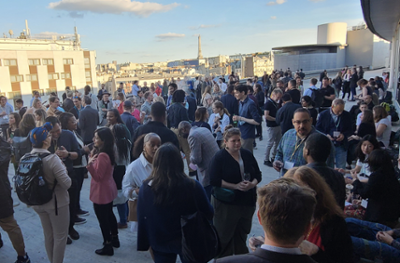Research & Creativity Spotlight
Research & Creativity Spotlight
Research & Creativity Spotlight
Dr. Alison Novak (PR/ADV)
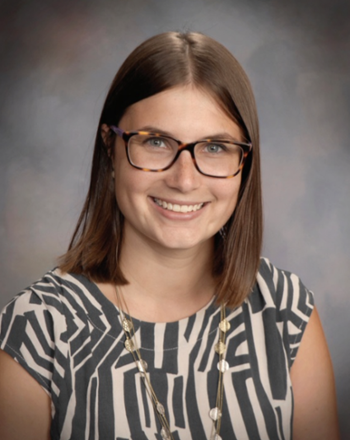 Sponsored brand videos produced by TikTok influencers are becoming more common in the healthcare field, and the CDC and scholars recommend studying the messaging of these videos to understand how they may impact the audience’s TTC efforts. Yet, there is conflict between the persuasive goals of sponsorships and the communicated sense-making (CSM) framework identified by previous social media TTC content. This study describes how creators grapple with these potentially contradictory motivations and frameworks while sharing content.
Sponsored brand videos produced by TikTok influencers are becoming more common in the healthcare field, and the CDC and scholars recommend studying the messaging of these videos to understand how they may impact the audience’s TTC efforts. Yet, there is conflict between the persuasive goals of sponsorships and the communicated sense-making (CSM) framework identified by previous social media TTC content. This study describes how creators grapple with these potentially contradictory motivations and frameworks while sharing content.Dr. Colleen Montgomery (RTF)
April 11th, 2025. This issue covers a CCCA research colloquium presentation by Dr. ColleenMontgomery from RTF. With more than 60 students from various departments of CCCA, Dr. Montgomery presented her project titled “LADY AND THE TRANSCRIPTION:PEGGY LEE’S LEGAL DOGFIGHT WITH DISNEY.”
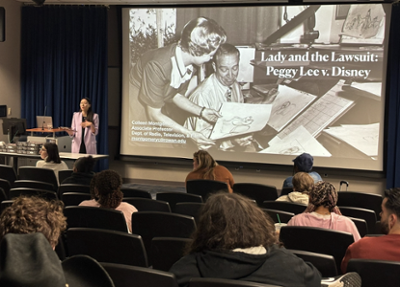 She introduced a case about Peggy Lee who sued Disney in 1988 over the home video release of Lady and the Tramp (1955), a film for which she had provided voice work and co-written songs. Lee’s contract granted her a share of profits from theatrical releases but made no mention of home video sales—an oversight common in contracts from that era, as the technology did not yet exist. When Disney released Lady and the Tramp on VHS, earning millions, Lee received nothing. Arguing that Disney had no right to use her voice without additional compensation, she won the case in 1991, receiving $2.3 million. Lee’s case echoes Scarlett Johansson’s 2021 lawsuit against Disney over Black Widow. Johansson's contract included bonuses based on box office earnings, but Disney released the film simultaneously in theaters and on its streaming service, Disney+, which reduced its box office potential. Johansson claimed this was a breach of contract, as her earnings depended on ticket sales. The lawsuit highlighted how entertainment contracts often fail to keep up with evolving technology. Ultimately, Johansson settled with Disney, reportedly receiving over $40 million. Both cases reflect broader struggles between creative professionals and studios, which led to the formation and strengthening of entertainment unions like the Screen Actors Guild (SAG-AFTRA). These organizations advocate for fair compensation.
She introduced a case about Peggy Lee who sued Disney in 1988 over the home video release of Lady and the Tramp (1955), a film for which she had provided voice work and co-written songs. Lee’s contract granted her a share of profits from theatrical releases but made no mention of home video sales—an oversight common in contracts from that era, as the technology did not yet exist. When Disney released Lady and the Tramp on VHS, earning millions, Lee received nothing. Arguing that Disney had no right to use her voice without additional compensation, she won the case in 1991, receiving $2.3 million. Lee’s case echoes Scarlett Johansson’s 2021 lawsuit against Disney over Black Widow. Johansson's contract included bonuses based on box office earnings, but Disney released the film simultaneously in theaters and on its streaming service, Disney+, which reduced its box office potential. Johansson claimed this was a breach of contract, as her earnings depended on ticket sales. The lawsuit highlighted how entertainment contracts often fail to keep up with evolving technology. Ultimately, Johansson settled with Disney, reportedly receiving over $40 million. Both cases reflect broader struggles between creative professionals and studios, which led to the formation and strengthening of entertainment unions like the Screen Actors Guild (SAG-AFTRA). These organizations advocate for fair compensation.
The media played a key role in both cases. In Lee’s time, newspapers and TV reports brought attention to the injustice of her situation, emphasizing how major studios exploited artists. Johansson’s case, however, unfolded in the digital age, with social media amplifying the debate. Public opinion largely sided with her, criticizing Disney for undercutting her earnings. This media attention pressured studios to reconsider contract terms in the streaming era.
Dr. Carl Hausman (Journalism)
March 28th, 2025. This issue covers their latest book, Readings in Sports Communication: Managing Fan Relations, Reputation, Media and Special Events, published in late 2024 by Kendall Hunt. The work is a 483-page edited reader with guiding commentary and original material written by the authors. It is the second volume the three have produced together, following 2022’s Law and Ethics in the Age of Digital Communication. With Drs. FitzGerald and Basso, Dr. Hausman have collectively edited, written, or co-written more than two dozen books, both individually and with other co-authors.
Readings in Sports Communication was written to “explore and synthesize the latest directions brought on by the digital age,” said FitzGerald, “along with integrating the entire process of sports communication. The book shows the relationship between modern public relations, strategic communication, special events, fan relations, branding, reputation management, crisis communication, social media, law, and ethics.”
Basso notes that the book is unique because supports an entire sports communication sequence, and presents the information from varying perspectives, addressing the expectations of fans, the needs of teams and players, and ways in which sports and sports media integrate with society as a whole -- including moral and legal obligations and communicators’ responsibilities in crisis situations.
Hausman, who has a research interest in the effects of new media technologies, also notes that the book includes fresh material related to developments in emerging platforms and metrics that help practitioners asses the reach and impact of their communication.
Dr. Bokyung Kim (PR/ADV)
Mar 13th, 2025. This issue poresents a project by Dr. Kim who presented her recent study at the International Public Relations Research Conference. Titled as “ Generative Crisis Communication: An Experimental Analysis of Effective Crisis Responses Crafted by ChatGPT,” her study sheds light on the growing role of artificial intelligence (AI) in corporate crisis communication, highlighting both its strengths and limitations. As AI adoption accelerates, companies are increasingly relying on large language models (LLMs) to analyze data, monitor public sentiment, and generate timely responses to potential crises. According to recent reports from Forbes (2024, 2025), AI is becoming a vital tool for businesses seeking to manage crises more effectively and efficiently.
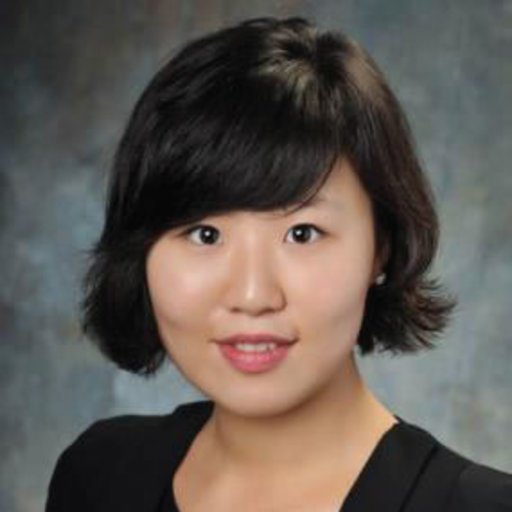 The study explores whether the type of response agent—AI versus human—affects how credible and authentic a crisis message is perceived to be. Conducted by a team of researchers, the study involved 298 AI users. It used a mixed-subject experimental design, testing two key variables: the type of agent delivering the message (AI vs. human) and the crisis response strategy (accommodative vs. defensive). The study also examined how the specific crisis context influences the effectiveness of AI-assisted communication.
The study explores whether the type of response agent—AI versus human—affects how credible and authentic a crisis message is perceived to be. Conducted by a team of researchers, the study involved 298 AI users. It used a mixed-subject experimental design, testing two key variables: the type of agent delivering the message (AI vs. human) and the crisis response strategy (accommodative vs. defensive). The study also examined how the specific crisis context influences the effectiveness of AI-assisted communication.
Findings from the research reveal that AI can be highly effective in crisis situations that demand quick and strategic communication. In fact, AI-generated responses were found to be perceived as equally credible and authentic as human-written ones in certain contexts. This suggests that AI could play a significant role in helping companies respond to crises in real time without sacrificing public trust. However, the study also uncovered nuances in how AI-generated messages are perceived. Research by Xiao and Yu (2025) supports the idea that AI outperforms human agents in delivering clear and adaptive crisis information, leading to higher stakeholder satisfaction. On the other hand, Lim et al. (2025) argue that human-generated statements tend to be viewed as more empathetic and sincere, especially when addressing sensitive issues. The research offers practical insights for companies seeking to balance AI and human involvement in crisis communication. Strategic integration of AI and human agents, tailored to the type of crisis and response strategy, could enhance both the speed and authenticity of corporate communication. Ultimately, while AI presents valuable opportunities for real-time engagement, human involvement remains crucial in conveying empathy and sincerity in certain crisis scenarios.
Dr. Drew Kopp (Writing Arts)
Feb 28th, 2025. I first came across this Latin text, De figuris sententiarum et elocutionis (The Figures of Thought and Speech), composed by the first-century-CE rhetorician Publius Rutilius Lupus, back around 2007 while writing my dissertation at the University of Arizona. Finding no extant English translation vexed me, and I resolved that one day I would see it translated. Meanwhile I began to seriously study rhetorical figures of thought and speech, which are for the most part poorly understood: figures of speech occur as identifiable patterns of sentences that exercise balance, or repetition, or omission, and figures of thought are maneuvers in language that produce effects in audiences.
 In 2017, I began to work with Zachary Hayworth, a PhD student at Harvard’s department of Germanic Languages and Literatures to produce a preliminary translation of De Figuris. However, by the time we received a “revise and resubmit” response from the editor of The Journal for the History of Rhetoric (June 2023), Zach was no longer available to work on the project. Interestingly enough, while working on this first translation I reconnected with my high school Latin teacher, Dr. Hans-Friedrich Mueller, (1985-88) who subsequently went on to become an accomplished classicist at Union College (Schenectady, NY). He accepted my invitation to join the project and he proceeded to produce a new translation while I revised and expanded the introduction in response to the peer reviewers’ comments.
In 2017, I began to work with Zachary Hayworth, a PhD student at Harvard’s department of Germanic Languages and Literatures to produce a preliminary translation of De Figuris. However, by the time we received a “revise and resubmit” response from the editor of The Journal for the History of Rhetoric (June 2023), Zach was no longer available to work on the project. Interestingly enough, while working on this first translation I reconnected with my high school Latin teacher, Dr. Hans-Friedrich Mueller, (1985-88) who subsequently went on to become an accomplished classicist at Union College (Schenectady, NY). He accepted my invitation to join the project and he proceeded to produce a new translation while I revised and expanded the introduction in response to the peer reviewers’ comments.
Now published as the lead article in Volume 27, Issue 3 (2024) of The Journal for the History of Rhetoric, “De Figuris: Rediscovering Publius Rutilius Lupus” provides the first-ever English translation of this ancient Latin text. The introduction presents two stages of the text’s reception history. The first stage is the text’s impact on the profusion of rhetorical compendiums in the sixteenth century and the second stage is the treatment that it received in eighteenth- and nineteenth-century studies, which led twentieth-century scholars to marginalize the treatise as missing the figures of thought promised by its title. We challenge this uncharitable interpretation and conclude that this early example of the genre of the compendium of rhetorical figures indeed includes figures of both speech and thought. Understanding De figuris as primarily a pedagogical text, we argue that the text should be read as protreptic, that is, as urging students to study this sequence of figures under the expert guidance of Rutilius and his school and in the process become both wise and eloquent.
Dr. Emil Steiner (Journalism, Sports CaM)
Feb 14th, 2025. This issue covers Dr. Steiner’s latest research project, “Hot Take Origin Story: How Journalists Shaped the ‘Authentic’ (And Lucrative) Identity of Sports Talk Radio, and How It Reshaped Media,” was published Journalism History. The article, co-authored by Sports Communication & Media (Sports CaM) alum Mason Crance (‘23) with research assistance from Sports CaM and Computer Science senior Caitlin King, offers an in-depth analysis of how journalists constructed, and contested, the identity of 24/7 sports radio from its inception through its mainstreaming in the late 20th century. Over two years in the making, this archival news project demonstrates the vital role undergraduates can play in academic scholarship and Sports CaM’s successful partnership with the Center for Sports Communication & Social Impact.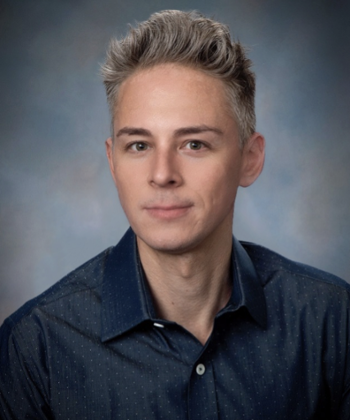
Through their thematic, textual analysis of over 1,000 articles published between 1986 and 2000, Dr. Steiner and his team explore the metajournalistic discourse that shaped perceptions of sports talk radio as a disruptor of legacy journalism. They found that while reporters attempted to delegitimize seminal stations like WIP and WFAN, characterizing them as “soap opera for men,” the critiques ultimately reinforced the stations’ branding as the “authentic” and deplorable voice of the people. Through their paternalistic critiques, journalists positioned themselves as authoritative insiders whose professional standards distinguished them from what they described as a sensationalist carnival of rumors and locker room humor polluting the airwaves. Yet those distinctions lent credence to the lucrative fantasy that WIP and WFAN were outsider platforms empowering fans to speak their truth to players, teams, and indeed legacy media. That fantasy grew more real as sports talk radio mainstreamed and began displacing columnists as the agenda setters for sports news.
As one of the first interactive, user-generated platforms, Steiner argues that sports talk radio presaged the “hot take industrial complex,” which dominates contemporary sports media. Its subversive, infotainment model warped the guardrails of traditional journalism and destabilized established gatekeepers by amplifying and exploiting voices long relegated to bleachers and barstools. This first of its kind journalistic history of sports talk radio exposes longstanding newsroom (and academic) biases about the role of sports in society while demonstrating how early journalistic critiques evolved into 21st century debates about news values, entertainment standards, and the representation of truth with the advent of reality TV, blogs, and social media. The project highlights not only the shifting boundaries of journalistic authority but the important and understudied impact sports have in evolving media ecology.
Dr. Carla Richards (PR/ADV)
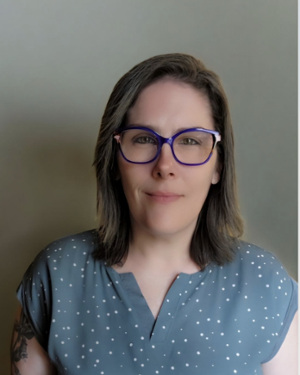 Jan 31st, 2025. This issue highlights Dr. Carla Richard’s research project titled “Navigating the waters of inequality: A rhetorical examination of water (in)access, (in)justice, and infrastructure failures in the United States.” This paper was presented at the 115th Annual Eastern Communication Conference. Dr. Richards explores the critical role of corporate social responsibility (CSR) in addressing water insecurity, particularly in Black, Indigenous, and People of Color (BIPOC) communities. In this research she examined how organizations like Veolia have historically contributed to water issues and how it is now attempting to reframe its image through CSR initiatives. This study focuses on a critical PR lens, highlighting the anti-CSR perspective that views these initiatives as ways for brands to appear as good corporate citizens without enacting real change. Veolia, a global leader in water services, has faced significant criticism for its past practices that have exacerbated water insecurity. Historically, Veolia’s operations have been linked to water contamination and scarcity in various regions, raising concerns about the company’s impact on vulnerable communities. However, in recent years, Veolia has launched a new CSR campaign, “Up to Us,” aimed at addressing climate change and promoting ecological transformation. This campaign seeks to position Veolia as a responsible steward of the environment, highlighting its efforts to provide sustainable water solutions and reduce its ecological footprint. Despite these efforts, the challenge remains in ensuring that CSR initiatives are not merely superficial but lead to substantive changes. Critics argue that CSR can often be used as a tool for image management rather than genuine social responsibility. For instance, while Veolia’s campaign emphasizes its commitment to sustainability, it is crucial to scrutinize the actual impact of these initiatives on water security in marginalized communities.
Jan 31st, 2025. This issue highlights Dr. Carla Richard’s research project titled “Navigating the waters of inequality: A rhetorical examination of water (in)access, (in)justice, and infrastructure failures in the United States.” This paper was presented at the 115th Annual Eastern Communication Conference. Dr. Richards explores the critical role of corporate social responsibility (CSR) in addressing water insecurity, particularly in Black, Indigenous, and People of Color (BIPOC) communities. In this research she examined how organizations like Veolia have historically contributed to water issues and how it is now attempting to reframe its image through CSR initiatives. This study focuses on a critical PR lens, highlighting the anti-CSR perspective that views these initiatives as ways for brands to appear as good corporate citizens without enacting real change. Veolia, a global leader in water services, has faced significant criticism for its past practices that have exacerbated water insecurity. Historically, Veolia’s operations have been linked to water contamination and scarcity in various regions, raising concerns about the company’s impact on vulnerable communities. However, in recent years, Veolia has launched a new CSR campaign, “Up to Us,” aimed at addressing climate change and promoting ecological transformation. This campaign seeks to position Veolia as a responsible steward of the environment, highlighting its efforts to provide sustainable water solutions and reduce its ecological footprint. Despite these efforts, the challenge remains in ensuring that CSR initiatives are not merely superficial but lead to substantive changes. Critics argue that CSR can often be used as a tool for image management rather than genuine social responsibility. For instance, while Veolia’s campaign emphasizes its commitment to sustainability, it is crucial to scrutinize the actual impact of these initiatives on water security in marginalized communities.
Professors Beatrice Carey Carter, Elizabeth Shores, and Marisa Watanabe (Art)
Dec 22nd, 2024. This issue features a project by Beatrice Carey Carter (Adjunct Professor, Art), Elizabeth Shores (¾ Faculty, Art), and Marisa Watanabe (Assistant Teaching Professor, Art). They presented the results of their Inclusive Art & Design Framework (IADF) project at the 4th Annual CCCA Research Showcase on December 6, 2024. This collaborative research centers the unique lived experiences of the diverse students within the Rowan University Art department to bolster more inclusive teaching and learning practices. Taking into account previous models of successful faculty-student partnerships across the country and abroad, research was conducted with one graduate and three undergraduate Rowan student consultants from diverse backgrounds to highlight best practices of inclusivity in post-secondary arts classrooms. From this work, an Inclusive Arts & Design Framework was created to be used as a model for future implementation in curriculum development and improvement.

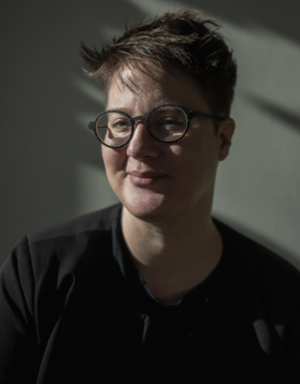

The team's review of best practices of diversity, equity, access, and inclusion currently employed in the department was used as a foundation in this research. Diverse student and faculty feedback were used to analyze findings to form an iterative student-centered and discipline-focused framework.
A synthesis of student feedback on current best practices and faculty researcher recommendations was generated from the resulting data analysis. A series of core areas was highlighted by students and faculty members to facilitate deeper critical consciousness and consideration for more inclusive practices.
The IADF, funded by the CCCA STORI and Denis Mercier Endowed Professional Development Grants, will be presented at the College Art Association, American Educational Research Association, and the National Art Education Association conferences in Spring 2025. A manuscript is forthcoming.
Dr. Angela Cirucci (Communication Studies)
Nov 22nd 2024. The current issue explores a research project, "Oversharing the super safe stuff: "Privacy-washing" in Apple iPhone and Google Pixel commercials" , by Dr. Cirucci from Communication Studies Department, published in First Monday.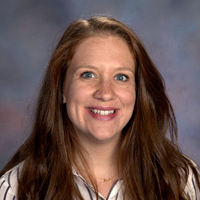
The study employs a critical discourse analysis of two commercials (Apple's Oversharing ad for iPhone and Google's Super Safe Stuff Securer ad for Pixel) as well as Apple's and Google's privacy policies. Her findings indicate that Apple and Google conflate "privacy" and "security" as well as sidestep complete definitions of data, only including explicit data and excluding implicit, aggregated, and inferred data. I argue that, through their ads, the companies rely on socially held expectations of privacy, delivering powerful metaphors of social hacking and phones acting as safes, allegedly letting no data leave the physical devices. In reality, their policies include that data freely flow to and from the phones, both natively and via third-parties, but these processes are deemed not important to discuss because aggregated and inferred data are not considered "personal."
Research highlights the growing use of the term "privacy-washing," describing a practice where companies emphasize privacy-focused policies to divert attention from their less privacy-conscious actions. This strategy is often employed to shape customer decisions by leveraging the public's broader perceptions of their brand identity. Privacy-washing allows organizations to cultivate an image of prioritizing user privacy while continuing practices that may contradict such claims. By capitalizing on widely held beliefs about their reputation and values, these companies aim to maintain customer trust and loyalty, even if their actual privacy practices fall short.
Professor Christopher Winkler (RTF)
Nov 8th, 2024. Though Prof. Winkler’s research and creative applied scholarship activities seem wildly different from each other, there is one conceptual number that links them: 360. Since 2020, Prof. Winkler has worked with colleagues in the College of Education on a National Science Foundation grant project known as STEM VRCE, formally titled: Broadening Participation in STEM Through Virtual Reality Career Exploration: Introducing Underrepresented Students to High Need STEM Careers. His project seeks to improve the process by which high school students are exposed to STEM-related careers and knowledge using virtual reality presentation. Viewers can don VR headsets and experience a series of short virtual field trips in which they meet with STEM professionals, and are provided a representative experience of being in various careers. The grant project and data from three years of student surveys and experimentation demonstrates that when students can experience something first-hand, specifically in a VR presentation, they are more likely to relate themselves to that career path and seek opportunities to pursue it. Prior to the VR experience, they might not have been interested in that career path at all.
Prof. Winkler served as the lead producer, director and editor for all three STEM VRCE 360/VR experiences, which won many awards at the Broadcast Education Association Festival of Media Arts (2022), Telly Awards (2022, 2024). More recently, as the grant project wraps up, all of the educational materials including the 360/VR experiences are publicly available as of this fall through here: http://go.rowan.edu/stemvrce.
Now, in classic TV lingo… but wait, there’s more… VR is not the only 360-degree arena in which Winkler applies his media production expertise. Take a short drive into Philadelphia, and just beyond the Walt Whitman Bridge you’ll see the massive bigscreen video board at Citizens Bank Park, home of the Philadelphia Phillies. Since 2017, Prof. Winkler has worked seasonally as a director for live in-stadium content, managing a crew of 20+ freelance staff in the production of baseball coverage and game entertainment. Take his Sports TV Production course, and Prof. Winkler will tell you “baseball is one of the most challenging sports to cover, as it is a 360-degree sport.”
Action is often non-linear and randomized, with simultaneous activity happening in multiple places at once – such as a ball bouncing off the outfield wall while a baserunner 300 feet away is running full speed towards home plate in an effort to score a run. Yet it all must be captured and presented in a way that makes sense to the viewer, and in the case of the in-stadium presentation, supplements or enhances what those in attendance can see with their own eyes. Working alongside a full time Producing staff, Prof. Winkler has at his disposal a multi-million-dollar, state-of-the-art facility, including over a dozen cameras, three instant-replay systems, multichannel video playback, animations and graphics, music and audio effects, which all serve as tools in effectively telling the story of the game and entertaining the 40,000+ fans in attendance each day and night. Many of the same tools used in this 360-degree facility are on-hand in the television studios in Bozorth Hall, and roughly a quarter of the freelance crew are graduates of Edelman CCCA’s RTF or SportsCaM programs.Though not in a formal classroom, Prof. Winkler trains new Phillies directors and technical directors, and interacts with Phillies interns on a regular basis as they learn the ins and outs of the production flow and content creation at the major-league level. Between research and production in virtual reality, and the immersive nature of live sports – specifically baseball – Prof. Winkler is always working in a 360-degree world.
Dr. Olga Vilceanu (PR/ADV)
Oct 25th, 2024. Dr. Vilceanu presented "Transferable Knowledge: Bridging the Theory and Practice of Research in Strategic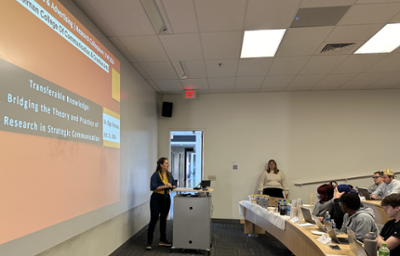 Communication" at the research colloquium on October 15th. This line of research focuses on applying academic insights from strategic communication to practical advertising scenarios. In recent years, advertising researchers and practitioners have increasingly emphasized the need to bridge theoretical frameworks with real-world applications to create more effective campaigns.One major area of such study involves how communication theories can guide the development of persuasive messaging. Researchers explore how attitudes, social norms, and perceived control shape consumer behavior and how these elements can be used to craft more impactful advertisements.
Communication" at the research colloquium on October 15th. This line of research focuses on applying academic insights from strategic communication to practical advertising scenarios. In recent years, advertising researchers and practitioners have increasingly emphasized the need to bridge theoretical frameworks with real-world applications to create more effective campaigns.One major area of such study involves how communication theories can guide the development of persuasive messaging. Researchers explore how attitudes, social norms, and perceived control shape consumer behavior and how these elements can be used to craft more impactful advertisements.
Furthermore, there’s a growing interest in integrating data-driven insights with traditional advertising models to improve targeting and personalization. This trend is highly relevant in the digital age, where platforms allow for real-time data analysis, and advertisers seek actionable knowledge that can adapt to rapidly changing media environments. By focusing on transferable knowledge, scholars aim to ensure that research is not only theoretically sound but also practically useful, enhancing the effectiveness of advertising strategies in diverse industries. Her research projects attempted to build a bridge between academia and practice, allowing for more relevant, adaptable, and successful campaigns.
Dr. Gina Audio (PR/ADV)
Oct 11th, 2024. This issue features the research presentation by Gina Audio (PR/ADV) at PR/ADV research colloquium. With more than 40 students as audience, Dr. Audio presented research about “Faculty Lived Experiences of Collective Trauma and the Use of Trauma-Informed Pedagogy to Transform Learning in the Higher Education Classroom.”
 With a global pandemic, higher education faculty experienced external threats from publicized incidents of school and community violence as well as internal threats from diminished public confidence. The added disruption of a pandemic led faculty to experience, interpret, and perform duties in precarious classroom settings, adding another layer of trauma to an already distressed population, and leaving education forever changed. The hermeneutic phenomenological study explored connections between faculty lived experiences of collective trauma and use of trauma-informed pedagogy, including how secondary trauma affected faculty. Interviews with 20 faculty teaching amidst pandemic-affected semesters collected responses to and interpretations of collective trauma and effects on pedagogy, perception of faculty roles, observations of generational differences, and changes in personal behavior.
With a global pandemic, higher education faculty experienced external threats from publicized incidents of school and community violence as well as internal threats from diminished public confidence. The added disruption of a pandemic led faculty to experience, interpret, and perform duties in precarious classroom settings, adding another layer of trauma to an already distressed population, and leaving education forever changed. The hermeneutic phenomenological study explored connections between faculty lived experiences of collective trauma and use of trauma-informed pedagogy, including how secondary trauma affected faculty. Interviews with 20 faculty teaching amidst pandemic-affected semesters collected responses to and interpretations of collective trauma and effects on pedagogy, perception of faculty roles, observations of generational differences, and changes in personal behavior.
Research revealed faculty perceived themselves as trauma-informed, affected by changing roles, and experiencing a new connection with their students, regardless of how many generations separated them. Faculty who integrated trauma-informed practices into classrooms experienced clearer understandings of transformational educator roles and showed a willingness to implement changes. Key findings showed faculty – and ultimately the students in their classrooms – benefitted from trauma-informed teaching and learning principles, such as collaboration, transparency, and an overall commitment to safety, empowerment, and mutual support. Specific practices faculty reported as already proving effective included giving students a mutual voice in decision-making about setting goals or class priorities where possible; integrating measures to promote student-faculty connection, such as through one-on-one coaching and feedback; recognizing and supporting the total student inside and outside of class; and promoting a sense of work-life balance, mutual trust, and respect. These best practices, according to faculty improved the classroom experience for both faculty and students trying to navigate a new world, promising a continued changing environment for teaching and learning.
Dr. Rui Shi (Comm Studies)
Sep 27th, 2024. This line of research addressed the communication challenges in the U.S. Food and Drug Administration’s  comprehensive regulatory plan to reduce nicotine in cigarettes. The FDA authorized the sale and marketing of two very low nicotine cigarettes (VLNC) as modified risk tobacco products. The misperception that VLNC are healthier than regular cigarettes is common. In two studies, we examined the role nicotine misperception played in people’s intention to smoke the VLNC and explored effective message strategies to inform the public about health risks associated with VLNC use, encourage cigarette smokers to try VLNC, and prevent other tobacco users and non-users from product initiation.
comprehensive regulatory plan to reduce nicotine in cigarettes. The FDA authorized the sale and marketing of two very low nicotine cigarettes (VLNC) as modified risk tobacco products. The misperception that VLNC are healthier than regular cigarettes is common. In two studies, we examined the role nicotine misperception played in people’s intention to smoke the VLNC and explored effective message strategies to inform the public about health risks associated with VLNC use, encourage cigarette smokers to try VLNC, and prevent other tobacco users and non-users from product initiation.
In Study 1 we conducted a cross-sectional survey with current smokers to assess their perceptions of nicotine and VLNC. Survey results showed that over half (54%) of the smokers overestimated nicotine risk, but this misperception was not associated with their underestimation of VLNC cigarette risk. About one-third of the smokers held the misperception that VLNC were healthier than regular cigarettes. In Study 2, a nicotine message (clarifying nicotine does not cause cancer) and an VLNC message (explaining VLNC cigarettes are as cancerous as regular cigarettes) were tested on four tobacco-use groups: non-tobacco users, cigarette-only smokers, cigarette dual/poly smokers, other tobacco users. Results show the VLNC message could effectively lower nicotine risk perception for all participants, weaken misbelief in VLNC safety for non-users and cigarette-only smokers, strengthen belief in VLNC carcinogenicity for other tobacco users, heighten belief in second-hand smoke harm for cigarette dual/poly smokers and other tobacco users, and increase VLNC intention for cigarette-only smokers.
Such findings suggested different messages are needed for different types of tobacco users. Both cigarette smokers and other tobacco users could benefit from messages that acknowledge the non-addictiveness but emphasize the health risks of VLNC. Regulators could consider making physical harm statements a requirement for VLNC packaging and marketing. New strategies need to be explored to inform cigarette dual/poly smokers. The paper was first presented at the 2023 annual conference of the International Communication Association in Toronto. It is now published in Preventive Medicine Reports:
Shi, R., Feldman, R., Liu, J., & Clark, P. I. (2024) Correcting misperceptions about very low nicotine cigarettes for cigarette-only smokers, dual/poly smokers, other tobacco users, and non-tobacco users. Preventive Medicine Reports, 46, 102856. https://doi.org/10.1016/j.pmedr.2024.102856
Dr. Bo Kim and Dr. Celine Hong (PR/ADV)
Sep 13th, 2024. This issue spotlights the research project presented by Dr. Celine Hong (PR/ADV) and Dr. Bo Kim (PR/ADV) at the Association for Education in Journalism and Mass Communication Conference (August 2024). Their research project investigated how practitioners (N=298) evaluate contents generated by AI vs. human writers in combination with their prior exposure to the tool.
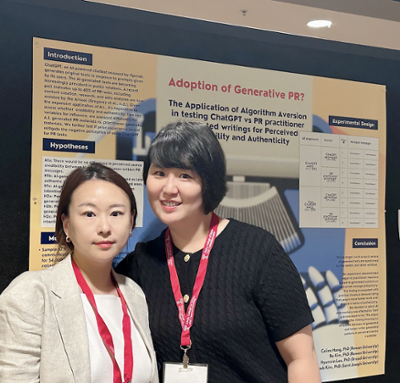 In PR practice, users’ perceived authenticity plays a vital role in effective communication, leading to positive organization-public relationships and enhanced trust towards an organization. However, AI generated contents are known to be less authentic or anthropomorphic (Lermann Henestrosa et al., 2023). According to “Algorithm Aversion,” AI’s content creation can diminish users’ sense of connection with the corporation (Mahmud et al., 2022). These feelings result from the perception that AI lacks the intrinsic human qualities necessary for producing content.
In PR practice, users’ perceived authenticity plays a vital role in effective communication, leading to positive organization-public relationships and enhanced trust towards an organization. However, AI generated contents are known to be less authentic or anthropomorphic (Lermann Henestrosa et al., 2023). According to “Algorithm Aversion,” AI’s content creation can diminish users’ sense of connection with the corporation (Mahmud et al., 2022). These feelings result from the perception that AI lacks the intrinsic human qualities necessary for producing content.
With a 2 (AI exposure: ChatGPT users vs non-users) x 2 (Source: ChatGPT vs a human writer) x 4 (Multiple Messages) experiment, we confirmed that negative practitioner reactions were found toward AI-generated contents in terms of perceived message authenticity.
We also found the effect of prior exposure of AI on attitudes toward the new technology: the belief in the machine heuristic was stronger (that AI-created texts would be objective and free from bias) for an AI than for a human writer, particularly when participants did have an experience of using AI.
As rapidly changing world will build a culture where the use of AI tools in our discipline becomes a new norm in the near future, we will no longer live in a world where AI-generated texts are questioned by the readers, but rather entitled. Concerning the key findings, future research is needed to unveil how impaired authenticity could strengthen corporate promoting AI adoptions in communication practice.
Prof. Amanda Almon (RTF)
May 17, 2024. This issue covers Professor Amanda Almon (RTF)’s current project funded by Federal Aviation Administration (FAA).
MAVRC (Machine Learning and Artificial Intelligence, Virtual Reality Center), the Electrical and Computer Engineering Department in the Henry M. Rowan College of Engineering and The Ric Edelman College of Communication and Creative Arts and College, proposes to continue to build upon the foundational infrastructure already developed under a separate grant between Rowan University and the FAA. This grant proposal continues existing and adds new tasks related to the development and 3-D modeling of a helicopter (interior and exterior), landing environment (helipads/heliports), visual/display systems, and other aspects of helicopters in order to visualize flight conditions and instrument readings of various gauges/panels/alarms/lights. In addition, the proposal adds new tasks related to analysis of helicopter flight data (audio/video/flight parameters) from actual and simulated FAA helicopter test flights and air traffic control audio using novel analysis techniques based on machine learning, pattern recognition, and other analysis techniques. By developing this capability, the FAA and Rowan will be able to increase the safety of the NAS by developing and prototyping tools for safety data analysis and data mining techniques to uncover anomalies in flight data recorded by onboard recording devices including flight data recorders, cockpit voice recorders, and video cameras.
Awarded Amount: $250,000 (Total funding to date: $500,000)
Dr. Alison Novak (PR/ADV)
 May 3, 2024. This issue covers current publications by Dr. Alison Novak (pR/ADV). It is estimated that more global offshore wind projects were introduced from 2020 until 2024 than in the 150 years of prior technological development. As states, countries, and regions recognize them as a possible tool to offset carbon emissions and fossil fuel use, the public is increasingly aware of these projects- with mixed reaction.
May 3, 2024. This issue covers current publications by Dr. Alison Novak (pR/ADV). It is estimated that more global offshore wind projects were introduced from 2020 until 2024 than in the 150 years of prior technological development. As states, countries, and regions recognize them as a possible tool to offset carbon emissions and fossil fuel use, the public is increasingly aware of these projects- with mixed reaction.
Since 2019, there have been stunning developments in public opinion surrounding offshore wind energy. Stockton University estimates that 80% of New Jersey residents supported offshore wind projects in 2019, but only 50% do so today. This change, in part, is a result of the significant work completed by anti-offshore wind groups, such as Protect Our Coast NJ- and the limited impact of pro-offshore wind groups. By comparison, Nike, with a billion-dollar marketing/advertising/public relations annual budget usually only moved public opinion by 2% a year. These anti-wind activist groups are extraordinarily successful with limited resources and funding. Two recent publications look at the discursive formation of public opinion on environmental topics such as offshore wind energy to see how individuals negotiate the value of these projects and their global impact.
First, a publication in Qualitative Research Reports in Communication looks at how X (Twitter) users discuss offshore wind energy using a globalization lens. This article demonstrates that offshore wind developers, activists, and government representatives should also be using the globalization lens to attempt to change public opinion to align with their project goals because this is an already-used discursive technique adopted by the public. Dr. Novak’s second publication for this topic studies how popular US news articles discursively constructed the climate change activism of Generation Z. This group is the most supportive of technologies such as offshore wind because they view them as a tool to help reduce the impact of fossil fuels. US news coverage of Generation Z’s relationship to climate change is mixed, presenting an inconsistent narrative to readers about their agency, ability to be manipulated by activist messaging, and overall impact on climate change. This type of inconsistency can produce inter-generational conflict and changes how readers view the group, climate change, and the work of activists.
- Alison Novak (PR & Advertising) published "Global discourses of protest and support of offshore wind energy" in Qualitative Research Reports in Communication.
- Alison Novak (PR & Advertising) published “News Coverage of Climate Change and Generation Z” in Springer Nature: Climatic Change. Publication date: May 1, 2024. DOI: 10.1007/s10584-024-03731-4
Dr. Lauren Smith (Comm Studies)
April 19, 2024. This issue features a special lecture from Dr. Lauren Smith (Comm Studies) about “Trans and Banned: Media Framing, Attitudes, and Perceptions of Transgender Athletes’ Participation in Sports” on April 11th at Victoria 200.
 Dr. Smith shared three of her projects in the lecture. Sport in America has continuously operated under what can be described as the ‘less than’ attitude towards minority and marginalized athletes. Previous research focusing on transgender participation in sport has been largely focused on physiological advantages and hormone therapy; research focusing on attitudes toward participation has been less prevalent. At different periods in time, women, minority, and disabled athletes were banned from sport participation, and attitudes about the acceptable identity in sport center around ideas of whiteness, masculinity, and heterosexuality.
Dr. Smith shared three of her projects in the lecture. Sport in America has continuously operated under what can be described as the ‘less than’ attitude towards minority and marginalized athletes. Previous research focusing on transgender participation in sport has been largely focused on physiological advantages and hormone therapy; research focusing on attitudes toward participation has been less prevalent. At different periods in time, women, minority, and disabled athletes were banned from sport participation, and attitudes about the acceptable identity in sport center around ideas of whiteness, masculinity, and heterosexuality.
Dr. Smith’s first study employed Framing Theory to analyze the media framed and narratives surrounding the laws in the 25 states that have banned transgender participation in sport. As of 2024, Twenty-five states in the United States had passed laws that ban transgender girls and women from publicly funded sports, while five states have enacted similar bans for transgender boys and men. The local/state-level media in each state examined through the lens of what narratives are selected, which are emphasized, and which are excluded in the coverage of each state’s bill.
The second project utilized the Moral Foundations Theory along with the Sacred Values Protection Model to examine the attitudes of female athletes currently competing in sport towards the inclusion of transgender females. And the third study experimentally tested how media framing affects the attitudes towards the inclusion of transgender females in sport using the three different cases as stimuli.
This was the sixth lectures provided by the PR/ADV Research Colloquium.
Dr. Broad Garrett (Comm Studies)
April 5, 2024. This issue featuresa special lecture from Dr. Broad Garrett (Comm Studies). This is the fifth lectures provided by the PR/ADV Research Colloquium. The lecture is about “The Fake Meat Debates: Public Perceptions of Meat and Alternative Proteins” on March 25that Enterprize Hall 409.

With more the 60 attendees from Comm Studies, Philosophy, Public Relations, and Advertising departments, Dr. Broad shared his perspectives about emerging type of animal product alternative produced using the tools of synthetic biology and precision fermentation. His research provides a useful contribution to the scholarly literature on food choice and public perceptions of novel food technologies in science communication. The industry and its advocates should be forthright and transparent in terms of the science underlying alternative foods to foster conversations and cooperation with governments, regulators, incumbent and advocacy organizations.
His current publication is available here: https://link.springer.com/article/10.1007/s10460-023-10436-4
Dr. Dianne Garyantes (Journalism)
Mar 8, 2024. This issue features Dr. Garyantes’s research, “Culturally Competent Health Reporting: The Influences of News 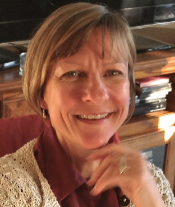 Sources and Formats,” which she co-authored with Dr. Priscilla Murphy, Emerita, Department of Strategic Communication, Temple University. Dr. Garyantes presented the study at the annual conference of the Association for Education in Journalism and Mass Communication in Washington, D.C.
Sources and Formats,” which she co-authored with Dr. Priscilla Murphy, Emerita, Department of Strategic Communication, Temple University. Dr. Garyantes presented the study at the annual conference of the Association for Education in Journalism and Mass Communication in Washington, D.C.
Many health issues reported on by U.S. journalists disproportionately affect people from particular cultures, including individuals from specific racial and ethnic groups. While news organizations act as a major source of health information, it is not clear whether or how they address the health information needs of culturally diverse audiences.
A growing number of professionals have addressed the need to communicate effectively with culturally diverse audiences by adopting the concept of cultural competence. Drs. Garyantes’s and Murphy’s study examined whether health news articles focused on obesity showed evidence of cultural competence in their reporting. Specifically, the study examined obesity coverage in 140 news articles from four Philadelphia news organizations—two mainstream news organizations and two ethic media outlets—to determine whether the news sources and news formats used demonstrated a culturally competent approach to health journalism.
A combination of content analysis and semantic network analysis was used to identify patterns in the obesity coverage and indicators of cultural competence in the news texts.
Overall, community and non-governmental sources, as well as personalized news formats, were most strongly associated with cultural competence. The data also showed that the ethnic news organizations pursued a culturally competent approach across all news formats and with their community sources, providing a model that could provide important health information to culturally diverse audiences. Mainstream news media showed evidence of cultural competence by covering “macro” issues related to obesity in particular communities and cultures, such as social determinants of health, as well as “micro” issues such as local initiatives to combat obesity.
Dr. Bokyung Kim (PR/ADV)
Feb 23, 2024. This week’s issue features one of the PR/ADV’s Research Colloquium series. Dr. Kim (PR/ADV) gave a presentation about “ChatGPT as a new PR Agent” on February 22nd at Victoria 200. Her project used a survey to provide new insights into understanding what factors influence the adoption of this new technology in our discipline and offer recommendations about best practices with an eye on ethical use of AI for the communication practitioners.

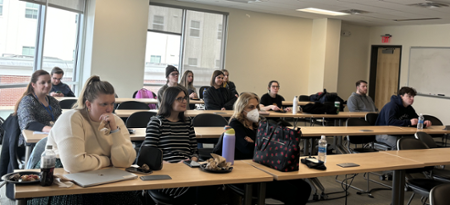 Recently, the Chartered Institute of Public Relations’ report (2023) revealed that up to 40% of tasks performed by public relations professionals are now assisted by AI tools and that the adoption of AI tools (e.g., Prowly, ChatGPT) has accelerated over recent years. AI can: 1) assist public relations managers in designing campaigns by identifying audience’s needs and trendy demands; 2) automate tactical tasks such as scheduling or making notes; 3) analyze and interpret the various forms of communications data to draw conclusions/insights; 4) help identify and adapt content for influencers and journalists; 5) help identify, segment and profile the target audiences by deciphering their buying patterns, habits, influences; 6) identify and respond to a crisis; and 7) ensure a precise analysis of the media coverage with AI-assisted tools (Panda et al., 2019). In short, “the adoption of AI in public relations ranges from content creation to the automation of repetitive tasks as well as to management of communications in times of crisis, and measurement of results” (Panda et al., 2019, p.203).
Recently, the Chartered Institute of Public Relations’ report (2023) revealed that up to 40% of tasks performed by public relations professionals are now assisted by AI tools and that the adoption of AI tools (e.g., Prowly, ChatGPT) has accelerated over recent years. AI can: 1) assist public relations managers in designing campaigns by identifying audience’s needs and trendy demands; 2) automate tactical tasks such as scheduling or making notes; 3) analyze and interpret the various forms of communications data to draw conclusions/insights; 4) help identify and adapt content for influencers and journalists; 5) help identify, segment and profile the target audiences by deciphering their buying patterns, habits, influences; 6) identify and respond to a crisis; and 7) ensure a precise analysis of the media coverage with AI-assisted tools (Panda et al., 2019). In short, “the adoption of AI in public relations ranges from content creation to the automation of repetitive tasks as well as to management of communications in times of crisis, and measurement of results” (Panda et al., 2019, p.203).
To see how practitioners utilize AI, Unified Theory of Acceptance and Use of Technology (UTAUT) was employed to develop a model based on the data from 350 practitioners. The results showed that three domains were crucial factors driving practitioners’ intention to use ChatGPT, including the perceived usefulness, perceived ease of use, and social influence. In the model, intention to use ChatGPT eventually ledto actual use of ChatGPT for PR related tasks along with direct effects from perceived trust. This finding also shows practitioners may not be fully motivated to continue using ChatGPT for other known motives such as information seeking, playfulness or personalization. As a result, rather than emphasizing other ChatGPT’s use motives, organizations should highlight the functional advantages of the AI technology, such as getting work done faster and more efficiently.
This project is accepted to present at the International Public Relations Research Conference (March, 2024).
Dr. Celine Hong (PR/ADV)
 Feb 9, 2024. This issue features Dr. Hong’s new publication with Dr. Kim (PR/ADV) “Application of Risk Information Seeking and Processing Model to the Health Preventive Behavior: How Risk Susceptibility and Political Identity affect Vaccination” on International Journal of Internet, Broadcasting and Communication.
Feb 9, 2024. This issue features Dr. Hong’s new publication with Dr. Kim (PR/ADV) “Application of Risk Information Seeking and Processing Model to the Health Preventive Behavior: How Risk Susceptibility and Political Identity affect Vaccination” on International Journal of Internet, Broadcasting and Communication.
Covid 19 crisis necessitated a shift in public health prevention behaviors, with cooperative efforts being essential to mitigate severe illness and prevent a resurgence of the virus. In such circumstances, vaccines emerged as a primary defense, considered the most potent tool in halting the virus’s spread and effectively combating the pandemic. However, vaccine hesitancy remains a challenge, making it essential to explore factors influencing health preventive behaviors, including vaccination uptake.
Using the Model of Risk Information Seeking and Processing (RISP), we developed a new model that individuals’ varying levels of risk perceptions, triggered from the RISP-related variables together would impact on their vaccination. Specifically, the paper explored whether, and how individuals’ COVID-19 vaccination behaviors are predicted by RISP-related variables (i.e., information insufficiency, affective responses, perceived information gathering capacity, subjective norms) and one’s political identity. Specifically, this study examined the effects of one’s risk information insufficiency on his or her information seeking and affective response regarding the pandemic, which is also related to their risk susceptibility perceptions. Lastly, the impact of political identity on one’s perceived risk susceptibility, and its association with COVID-19 vaccination behaviors are also tested from a survey of 705 adult participants in the U.S.
The analysis showed that information insufficiency significantly predicts information seeking and affective response all of which are positively associated with risk susceptibility. The risk susceptibility is also affected by political identity before it relates to vaccination. These findings significantly help untangle some contradictory results from previous study that political identity may be unnecessary to consider in regard to health intervention. Also, a participant’s individual political identification impacts the relationship between RISP predictors and risk susceptibility which eventually predicts intention to receive a vaccination. The current study elucidates how individuals develop their prevention behavior intentions, especially during a highly politicized health crisis, the COVID-19 pandemic crisis as the findings show that risk averse behavior is not simply promoted by increasing risk susceptibility, especially when a risk is highly politicized.
*This work was supported by Rowan University (Ric Edelman College of Communication & Creative Arts’ STORI (Support for Teaching, Outreach and Research Innovations) Fund.
Dr. Rui Shi (Comm Studies)
Nov 10, 2023. This issue features Dr. Shi's project, titled "Trends in e-cigarette advertisements following major policy changes in the U.S: The warning label requirements, Tobacco 21, and the flavor enforcement policy."
In the past five years, the United States has implemented several regulatory measures to govern the sale and marketing of e-cigarettes. In September 2018, the U.S. Food and Drug Administration (FDA) issued the nicotine warning requirements that mandated e-cigarette ads to include a health warning label on nicotine harm. In December 2019, the U.S. Congress passed the federal Tobacco 21 law to raise the minimum legal age to purchase e-cigarettes to 21. In addition, in January 2020, the FDA issued a flavor enforcement policy that essentially limited the sale of cartridge-based ENDS to only tobacco and menthol flavors. This content analysis examines the trends in electronic cigarette advertising strategies during these policy changes in the U.S.
Digital copies of the mobile, online display, outdoor, and print advertisements of Vuse, Njoy, and Logic from 2016 to 2022 were obtained for content coding. Two research assistants (undergraduate students from Comm Studies) were trained to code the ads for their warning label compliance, presence of youth appeals, and visual or textual reference to flavors.
Trend analysis shows that the warning label requirement triggered instant compliance in all three brands, as they have consistently shown a health warning about nicotine harm in their ads since the policy implementation date. The brands' response to flavor regulation is gradual, as it took about one and a half years for the visual and textual flavor cues to phase out of the ads. The youth appeals in the ads were still prevalent regardless of the implementation of the Federal T21 law. The percentage of Vuse ads containing youth appeals has even increased since T21.
Findings from this project will be submitted to the 2024 conference of the Society For Research On Nicotine and Tobacco.
Dr. Emil Steiner (Journalism)
 Oct 27, 2024. This issue spotlights Dr. Emil Steiner's co-authored project with Rowan Sports Communication & Media graduate Mason Crance ('23) entitled "First Time, Long Time: How Journalists Shaped the "Authentic" (and Lucrative) Identity of Sports Talk Radio," which won Top Paper in Sport Communication at the 2023 International Communication Association (ICA) convention in Toronto this summer. Their work examined articulations of sports talk radio found in the descriptions and accounts of journalists covering the first two all-sports stations in the United States -- WIP (Philadelphia) and WFAN (New York). The authors tracked the stations' mediated origins from birth in 1986 through mainstreaming in the 1990s. Their collaboration marks the first time a Ric Edelman College of Communication & Creative Arts undergraduate has been part of an ICA Top Paper team.
Oct 27, 2024. This issue spotlights Dr. Emil Steiner's co-authored project with Rowan Sports Communication & Media graduate Mason Crance ('23) entitled "First Time, Long Time: How Journalists Shaped the "Authentic" (and Lucrative) Identity of Sports Talk Radio," which won Top Paper in Sport Communication at the 2023 International Communication Association (ICA) convention in Toronto this summer. Their work examined articulations of sports talk radio found in the descriptions and accounts of journalists covering the first two all-sports stations in the United States -- WIP (Philadelphia) and WFAN (New York). The authors tracked the stations' mediated origins from birth in 1986 through mainstreaming in the 1990s. Their collaboration marks the first time a Ric Edelman College of Communication & Creative Arts undergraduate has been part of an ICA Top Paper team. Prof. Heather Lanier (Writing Art)
October 13, 2023. This issue features Professor Lanier's recent publication.
We think of religion as a space for certainty, as a place of dogma rather than doubt. Heather Lanier’s new book of poems, Psalms of Unknowing, challenges that assumption. Published by Monkfish in September of 2023, the poems in this full-length collection mix religious themes with contemporary issues such as gun violence, household divisions of labor, pandemic politics, and raising daughters in today’s uncertain world.
By diving into both the personal and the political, the poems ask: How do we reconcile our love with our grief? The world’s cruelty with its beauty? How do we live into a real faith if the old one feels untrue? Written at the intersections of motherhood, feminism, and spirituality, Psalms of Unknowing seeks to reconcile the world’s heartbreak with our longing for its divinity. Sometimes sassy, sometimes serious, the poems carve the way for a different kind of faith—one that deepens not by knowing the answers but by asking the questions.
Professor Lanier has received overwhelmingly positive reviews for her book. Bestselling author Kate Bowler called it, “Poignant. Provocative. Downright hilarious.” Kirkus Reviews wrote: “Lanier’s metaphors are masterful… Her descriptions are visceral and unique…. Lanier’s truth telling is bold and vulnerable…. A powerful poetic reckoning with motherhood and religion.” NPR-featured, NEA-supported poet, Natalie Shapero, described the collection as such: “With candor and with canniness, Lanier excavates and eviscerates pat aphorisms and knee-jerk positivity, offering instead a deeply considered engagement with mothering, marriage, spirituality, the medical establishment, and beyond. Lanier writes with formal dexterity and winking lyricism, against misogyny and against ableism, and toward a world worthy of the faithful, the faithless, and everyone in between."
Professor Lanier is thankful to Rowan University and the Edelman CCCA for supporting her work.
Dr. Garrett Broad (Comm Studies)
September 27, 2023. This issue features Professor Broad's recent work was published in Nutrition Today, a scholarly journal targeted at health professionals that serves as the official partner publication of the American Society for Nutrition (ASN). It wades into one of the more contentious areas of debate in contemporary nutrition research and food system policymaking -the ideal role of animal products in the human diet, movements for vegan and vegetarian diets, and the value of "alternative proteins" as substitutes for animal foods. The article introduces the “alternative protein ideological circle” as a framework for understanding the nature of this contestation, as well as the key stakeholder groups who animate the landscape. Its conclusions are aimed at informing nutrition and health professional's practice, as well as offering scholarly insights that can help researchers and activists better navigate these ongoing conversations.
 Alternative proteins take several distinct but overlapping forms. Plant-based meat and dairy alternatives include long-standing minimally processed items such as tofu, tempeh, bean, and legume products. More recently, these items have been joined in the retail and restaurant environments by products that aim to more closely match the taste, texture, and nutritional qualities of conventional animal products, often in the form of burgers, nuggets, milks, eggs, and other popular types. Elsewhere, in just the last few years, the emerging science and industry of cellular agriculture has developed with the goal to use the tools of synthetic biology and tissue engineering to create "cultivated meat" (also referred to as cell-cultured or lab-grown meat, among other monikers), products that are molecularly identical to conventional animal proteins, but without the need to raise and slaughter animals at all. Cultivated meat is in the process of advancing through regulatory approval in the United States, although significant technological and consumer-oriented hurdles remain before they are widely available.
Alternative proteins take several distinct but overlapping forms. Plant-based meat and dairy alternatives include long-standing minimally processed items such as tofu, tempeh, bean, and legume products. More recently, these items have been joined in the retail and restaurant environments by products that aim to more closely match the taste, texture, and nutritional qualities of conventional animal products, often in the form of burgers, nuggets, milks, eggs, and other popular types. Elsewhere, in just the last few years, the emerging science and industry of cellular agriculture has developed with the goal to use the tools of synthetic biology and tissue engineering to create "cultivated meat" (also referred to as cell-cultured or lab-grown meat, among other monikers), products that are molecularly identical to conventional animal proteins, but without the need to raise and slaughter animals at all. Cultivated meat is in the process of advancing through regulatory approval in the United States, although significant technological and consumer-oriented hurdles remain before they are widely available.
Grounded in wide-ranging qualitative analysis, the paper argues that perspectives on alternative proteins coalesce around two primary ideological poles – 1) meat attachment or carnism, the extent to which people believe or do not believe that eating animals is a natural, normal, and necessary part of contemporary life; and 2) sociotechnical imaginaries, divided between techno-optimistic “wizards” and techno-skeptical “prophets.” From there, four key stakeholder groups emerge: 1) the “high-tech vegans” (techno-optimists with low levels of carnism); 2) the “ecomodernists” (techno-optimists with high levels of carnism); 3) the “good foodies” (techno-skeptics with low levels of carnism); and 4) the “carnivore traditionalists” (techno-skeptics with high levels of carnism). The paper offers illustrative examples of these groups, drawing from popular media and advocacy.
Broad, G. M. (2023). Understanding the (Fake) Meat Debates: The Alternative Protein Ideological Circle. Nutrition Today, 58(4), 181-188.
Dr. Miles Coleman (Comm Studies)
 September 7, 2023. This issue features Dr. Miles Coleman’s in-press book: Influential Machines: The Rhetoric of Computational Performance. The book investigates the persuasive threats and opportunities of “machine communicators,” or instances of digital media that are meant to be participants in conversation, such as bots and voice-based assistants. Specifically, the book offers a new framework for capturing the unique “rhetorical energies” that attend digital communicators. Where we might be quick to acknowledge the importance of how a person “moves” when they speak—the rhetorical energies of their performance—we are unaccustomed to naming the energies of the machines with which we increasingly communicate.
September 7, 2023. This issue features Dr. Miles Coleman’s in-press book: Influential Machines: The Rhetoric of Computational Performance. The book investigates the persuasive threats and opportunities of “machine communicators,” or instances of digital media that are meant to be participants in conversation, such as bots and voice-based assistants. Specifically, the book offers a new framework for capturing the unique “rhetorical energies” that attend digital communicators. Where we might be quick to acknowledge the importance of how a person “moves” when they speak—the rhetorical energies of their performance—we are unaccustomed to naming the energies of the machines with which we increasingly communicate.
In light of the rapid advancements of automation and artificial intelligence—advancements that are attended “performances” of such things as data analysis and retrieval—Influential Machines develops a necessary thickening of procedurality by turning attention to the visceral “more” that attends the movements of computational performances. That is, in procedural rhetorical approaches to digital media the analyst “reads” the procedures in a given software by accounting for its decision trees and structure, in turn, describing the argument the software might encourage onto users. Software that encourages a particular view of the world by giving positive feedback toward some decisions, while punishing other decisions, for instance, could be said to instantiate a procedural rhetoric. Procedural rhetorical approaches, while rife with useful and profound insights, also tend to emphasize the logicsof software, leaving such things as feelings, affects, and emotions by the wayside.
Leveraging George Kennedy’s “rhetoric as energy” approach (i.e., rhetorical analysis focused on the emotional and physical energies of a given performance), Coleman offers a framework for “thickening” traditional procedural approaches to computational media. By pushing beyond the “front” and “back” ends of computing, and toward the “deep end” of computing, Coleman shows that antecedents of discourse, such as Terminator, the Oracle at Delphi, patriarchy, and the traditions of interface endemic to “expert systems” find animation in the movements of web applications, social bots, and voice-based assistants. In turn, Influential Machines highlights the value of interpretive approaches to human-machine communication, by exposing that literature and aesthetics are not simply interesting or fun to think about in the context of computational media, but rather are integral windows into the influence of machine communicators, as they imbue energies that enliven claims to scientific truth, artistic experiences, and political advocacy.
Coleman, Miles C. Influential Machines: The Rhetoric of Computational Performance. University of South Carolina Press, in-press.
Dr. Celine Hong (PR/ADV)
May 1, 2023. This issue features Dr. Celine Hong's presentation at DC Health Communication Conference on April 28-29, 2023. Her research titled, "Integrating Public Health and Geography: A study of inequalities of income, education, and minority to predict obesity" examined inequality among several areas in NJ by dissecting whether a neighborhood attracts a certain type of people with inequalities, and then if the neighborhood affords a certain type of lifestyle more conveniently (i.e., community level prevention).
Inconsistent obesity rates across U.S. cities affirm that obesity is not a simple artifact of varying population compositions, but the result of independent “area” effects. Such effects generated by geographical features, also known as neighborhood effects, are considered to reflect the possibility of societal disparities, which lead to continuing higher level contextual influence. In this regard, the study investigates three factors defining inequalities among areas in NJ to predict if where independent areas affect individual obesity level. In doing so, our hypotheses tested associations between obesity and individual antecedents to be mediated by their community with varying levels of higher education ratio (H1), income (H2), and minority ratio (H3).
The fidnings showed that association between health application usage and obesity (i.e., individual BMI scores) is different depending on the level of higher education ratio of the neighborhood in which participants live. In addition, association between individual eating pattern and BMI is moderated by minority ratio of the neighborhood. Lastly, individual efforts (e.g., eating habits, obesity related information searching) associated with personal BMI is affected by income level of the neighborhood.
The study confirmed that neighborhoods are significant factors that mediate the association between individual factors and obesity. Educational attainment, race disparities, and income infer the relationship between individual life island obesity. Thus, the current findings could contribute to building community-base intervention on various ways.
Dr. Bokyung Kim (PR/ADV)
 April 21, 2023. This issue features Dr. Bo Kim's recent work (co-authored with Dr. Celine Hong, PR/ADV) titled, "Are they still determining? Analysis of Associations among Ethnicity, Gender, Socioeconomic Status, Neighborhood Factors and COVID-19 Vaccination," published in Frontiers in Communication. During the pandemic as a global health disaster, reducing and preventing the spread of COVID-19 was a main priority for government officials and individuals.
April 21, 2023. This issue features Dr. Bo Kim's recent work (co-authored with Dr. Celine Hong, PR/ADV) titled, "Are they still determining? Analysis of Associations among Ethnicity, Gender, Socioeconomic Status, Neighborhood Factors and COVID-19 Vaccination," published in Frontiers in Communication. During the pandemic as a global health disaster, reducing and preventing the spread of COVID-19 was a main priority for government officials and individuals.
While COVID-19 vaccines have become more critical to effectively control the virus together and bring an end to the pandemic, vaccination rates in the United States and around the world were inconsistent in a particular community or among a certain racial group. Thus, I aimed to understand individual and social determinants of COVID-19 vaccination. In doing so, this project explored how various factors (e.g., socio-demographic variables like ethnicity, gender, educational attainment, and income) impacted on adults' vaccination tendency. Our data showed that vaccination differed significantly across race/ethnicity, individual income, and perceived safety of one's township. Specifically, respondents who were Black/African American or Hispanic/Latino, and those with lower income had a prevalence of vaccination than those who were white or one in higher income brackets.
Noteworthy, individual assessment of one's community environments and perceived safety was another significant determinant of COVID-19 vaccination. These findings would help develop an equitable vaccine distribution plan, as well as public health campaigns that pursue racial/ethnic equality.
Kim, Hong, & Kim (2023) Are they still determining? Analysis of Associations among Ethnicity, Gender, Socioeconomic Status, Neighborhood Factors and COVID-19 Vaccination," published in Frontiers in Communication, https://doi.org/10.3389/fcomm.2023.1040797
Prof. Mark Berkey-Gerard (Journalism)
 April 7, 2023. This issue features Mark Berkey-Gerard's research project, "Collaborative journalism education: An examination of partnerships between universities and news organizations," which he presented at the 2022 Collaborative Journalism Summit.
April 7, 2023. This issue features Mark Berkey-Gerard's research project, "Collaborative journalism education: An examination of partnerships between universities and news organizations," which he presented at the 2022 Collaborative Journalism Summit.
Over the last two decades, nearly one-third of all newspapers in the U.S. have gone out of business. Many of those that have survived have reduced the size of their newsroom staff and are able to do original reporting. As a result, an estimated 70 million Americans now live in "news deserts," areas without basic information on the functions of local government and communities.
In response, academic journalism programs at universities and have formed partnerships with news outlets and are employing students to help produce local news. These projects offer real-world experience for students and provide additional resources for community journalism. The efforts also seek to increase the quality and quantity of news available to the public. This research seeks to identify and better understand the characteristics of these partnerships between academic and news organizations, the benefits and challenges they efforts face, as well as to collect recommendations for future collaborations.
The project began by identifying more than 100 student/professional partnerships in the U.S. The participants - both academic and news professionals - were surveyed about the partnerships and their models of collaboration. In addition, interviews were conducted with more than two dozen individuals who have experience in this area.
Prof. Berkey-Gerard also presented his research for the Center for Community News at Vermont University, which provides resources and training for journalism educators and news organizations. He is in the process of adapting it for a journal publication.
Dr. Celine Hong (PR/ADV)
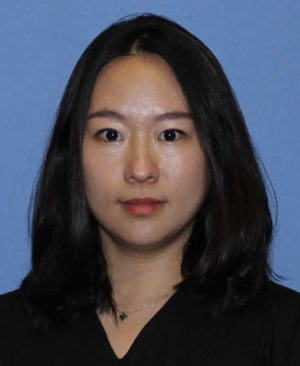 During the pandemic, the most critical tasks for universities were to communicate with students, faculty and staff members. Public Relations practitioners recommended continuous communication efforts with their public. In doing so, universities have provided crisis communication messages in several ways to inform the students about how the classroom would be transformed and sterilized, and to update how a university dealt with the situation. The current study investigated if such effort actually generated positive perception toward the university. So the paper asked, during theCOVID-19 crisis, how did universities’ defensive and accommodative responses impacted on maintaining positive relationships with students?
During the pandemic, the most critical tasks for universities were to communicate with students, faculty and staff members. Public Relations practitioners recommended continuous communication efforts with their public. In doing so, universities have provided crisis communication messages in several ways to inform the students about how the classroom would be transformed and sterilized, and to update how a university dealt with the situation. The current study investigated if such effort actually generated positive perception toward the university. So the paper asked, during theCOVID-19 crisis, how did universities’ defensive and accommodative responses impacted on maintaining positive relationships with students?Dr. Bokyung Kim (PR/ADV)
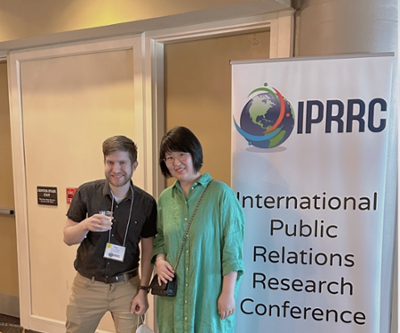 March 10, 2023. Dr. Bokyung Kim (right in the picture, PR/ADV) and MA student Peter Yanefski (left in the picture) presented three papers at the international Public Relations Research Conference (IPRRC) in Florida. Throughout 26 years of history, IPRRC has become one of the top venues for presentation of innovative PR research and for interaction among scholars and professionals. This year 107 projects from more than 50 universities across the world were selected to present at the conference.
March 10, 2023. Dr. Bokyung Kim (right in the picture, PR/ADV) and MA student Peter Yanefski (left in the picture) presented three papers at the international Public Relations Research Conference (IPRRC) in Florida. Throughout 26 years of history, IPRRC has become one of the top venues for presentation of innovative PR research and for interaction among scholars and professionals. This year 107 projects from more than 50 universities across the world were selected to present at the conference.
Dr. Kim’s project (co-author with Dr. Celine Hong, PD/ADV), “How to Become Truly “Sustainable”: A Study of Top Retail Brands’ Sustainability Reports and Consumer Evaluations on Corporate Sustainability Communications ”was supported by STORI fund of the Edelman CCCA last year. The project used a mixed method of content analyses of top retail brands’ sustainability reports and media coverage. The results showed significant associations between corporate sustainability communications, consumer’s CSC evaluations, and their shared behaviors. This provides implications for scholars and practitioners by showing how companies have practiced their sustainability-focused programs and how consumers evaluated the US leading retailers differently based on the sustainability report. Dr. Kim noted that “Presenting at IPRRC is a great opportunity for faculty and students to promote their great idea and achievement in PR practice. This year is especially special as I get to witness Peter Yanefski’s amazing project shared with other scholars!”
List of projects by Rowan University at 2023 International Public Relations Research Conference
- Kim, B., Lee, S. Y. and Hong, S. (March, 2023) The How to Become Truly “Sustainable”: A Study of Top Retail Brands’ Sustainability Reports and Consumer Evaluations on Corporate Sustainability Communications.
- Hong, S., Lee, S. Y., and Kim, B (March, 2023) The True Impact of Internal Factors on Organizational Authenticity during a Crisis: An Application of Fully Functioning Society Theory (FFST).
- Yanefski, P. (March, 2023) A study of Corporate Social Advocacy Strategies and Internal Communications for Employees with Invisible Illnesses.
Dr. Miles Coleman (Comm Studies)
Feb 28, 2023. Dr. Coleman's recent essay evaluates various methods for addressing the moderation and removal of misinformation in social media contexts. He examines the relationship between platform politics and the spread of false information by drawing on theoretical discussions from science, technology, and medicine, digital rhetoric, and media ethics. In the essay, Dr. Coleman aims is to move toward nuance in our understanding of the ethical roles of social media platforms regarding misinformation.
Dr. Coleman points out that social media companies have implemented strategies to combat false information, such as flagging misleading claims, attaching corrective statements, and removing content. However, these measures are often automated and secretive, and the decision-making process is concealed within the proprietary systems of these companies. This black boxing of the moderation process raises concerns about accountability and the degree to which private companies shape public discourse. Despite these concerns, less transparent approaches might be more effective in combatting the spread of misinformation, especially with phenomena such as "bots," where transparent moderation rules could be leveraged to share more false information.
Some social media companies are experimenting with alternative approaches, which involve a more participatory and transparent method of addressing misinformation. In these models, the community is encouraged to identify and comment on potentially false information. This open-source approach presents a unique opportunity to navigate the ethical tensions inherent in more traditional, top-down methods of moderation. However, it also poses challenges, particularly regarding the credibility of users who flag or comment on misinformation. Studies have shown that corrections of misinformation are most effective when coming from reputable sources, rather than random individuals on social media.
It is essential to recognize that an "all or nothing" approach to content moderation is inadequate as we strive to balance accuracy and freedom of expression. Nuance is required in how we curate spaces where people can come together to know well.
Miles C. Coleman, “Attempting to Stop the Spread: Epistemic Responsibility and Platformed Responses to the COVID-19 ‘Infodemic’.” Social Media Ethics and COVID-19: Well-Being, Truth, Misinformation, and Authenticity, edited by Berrin Beasley and Pamela Zeiser (Lexington Books, 2022).
Dr. Garrett Broad (Comm Studies)
Nov 4, 2022. This issue features Professor Broad’s recent research that has explored the social, environmental, and economic implications of the emerging field of cellular agriculture. As a science and industry, cellular agriculture uses the tools of synthetic biology and tissue engineering to create products that are molecularly identical to conventionally produced animal foods, without the need for raising and slaughtering animals. The field is currently nascent and quite speculative – cell-cultured meat products (made by culturing and cultivating animal cells in a laboratory environment) have not yet achieved regulatory approval or commercial scale in the United States, while animal-free dairy products (made using genetic engineering and precision fermentation) have only recently begun to appear in the US retail market. 
Writing with colleague Robert M. Chiles (Pennsylvania State University), Professor Broad contributed an article to a special issue in Nature Food, which included several contributions focused on the potential role of cellular agriculture in a future sustainable food system. Indeed, advocates of cellular agriculture argue that this cutting-edge approach to food production could provide an abundant source of nutritious protein and offer a host of benefits for public health, animal welfare, environmental quality, economic opportunity, worker safety and community well-being. A number of critics, however, worry that cellular agriculture could reinforce unsustainable and unjust dynamics in contemporary food systems.
Broad and Chile’s article outlines how a “food justice” framework can serve as a useful guide for the evaluation of cellular agriculture’s contributions to food system sustainability. The work describes the six primary focus areas in food justice work, including food and its connection to racial justice; climate and environmental justice; labor equity; health, nutrition and culinary culture; place-based community and economic development; and participation in decision-making processes. The authors argue that early engagement with cellular agriculture could help advocates incorporate principles of food justice into the field's structural and conceptual foundations. They hope that the research will help scholars, practitioners, supporters, and skeptics alike assess cellular agriculture’s strengths and weaknesses in the years ahead.
The research was supported by a grant from the United States Department of Agriculture’s National Institute of Food and Agriculture. It aligns with Rowan’s Catalysts for Sustainability initiative, of which Professor Broad is a member.
Citation: Article" Broad, Garrett M., and Robert M. Chiles. "Thick and thin food justice approaches in the evaluation of cellular agriculture." Nature Food (2022): 1-3.
https://www.nature.com/articles/s43016-022-00603-x
Professor Mark Berkey-Gerard and Dr. Dianne Garyantes (Journalism)
Oct 19, 2022. This issue features Mark Berkey-Gerard and Dianne Garyantes from the Journalism Department for their a $40,000 grant from South Jersey Climate News project that provides local news coverage of climate change. The grant from the New Jersey Civic Information Consortium will support student reporting, content partnerships with local news outlets, and trainings. They will be collaborating as part of the grant with the Jon Akass (RTF) and his film production students, as well as Atlantic Cape Community College students. The grant will contribute to more nuanced local reporting about climate change and its effects in the South Jersey region.

The Journalism Department also is collaborating with The Hammonton Gazette on a second $35,000 grant from the New Jersey Civic Information Consortium. In this grant, Rowan journalism students will report for The Gazette as paid freelance reporters, covering local government meetings in news deserts in Western Atlantic County (Folsom Borough, Mullica Township, Egg Harbor City, Buena Borough, and Buena Vista Township) and Eastern Camden County (Winslow Township and Waterford Township).The grant to South Jersey Climate News will contribute to more nuanced local reporting about climate change and its effects in the South Jersey region. The local reporting that is part of the collaboration with The Hammonton Gazette will fill current gaps in information about what is happening at the local level in these communities. Both grants will run from Fall 2022 to Fall 2023.
Dr. So Young Lee (PR/ADV)
Oct 5, 2022. This issue features a recent publication by Dr. So Young Lee (PR/ADV) . Titled “Free tumbler in Snapchat vs coffee tasting ticket in Instagram: the impact of gift type and message type on B2C gift-giving on different social media platforms,” the project was published in European Journal of Marketing with co-authors, Dr. Kim (Chung-Ang University, South Korea), Dr. Sung (The University of Oklahoma, USA) and Dr. Um (Hongik University, South Korea).
 Gift-giving is a “social activity confirming relationships and social interactions.” It can be used ss an effective mean for companies or brands to demonstrate their appreciation toward their customers, thus helping to strengthen brand‑customer relationships. As a form of social communication (Ku et al., 2018; Shen et al., 2011), business-to-consumer (B2C) gifts facilitate supportive relationships with consumers. In addition, in recent years, visual-oriented cultures have gained popularity, with images accounting for a significant portion of millennial consumers’ online conversations. Lee et al. (2015, p. 552) referred to this phenomenon as “pictures speak louder than words.” Several practitioners and scholars have highlighted the value of sharing images in brand communication and found that visuals have a positive effect on consumer engagement. Her research examines the differential effects of the type of gift (material vs experiential) offered on Snapchat and Instagram (Study 1) and how the impacts of gift type and message type (informational vs emotional) vary by the two different image-sharing social media platform in a business-to-consumer (B2C) gift-giving context (Study 2).
Gift-giving is a “social activity confirming relationships and social interactions.” It can be used ss an effective mean for companies or brands to demonstrate their appreciation toward their customers, thus helping to strengthen brand‑customer relationships. As a form of social communication (Ku et al., 2018; Shen et al., 2011), business-to-consumer (B2C) gifts facilitate supportive relationships with consumers. In addition, in recent years, visual-oriented cultures have gained popularity, with images accounting for a significant portion of millennial consumers’ online conversations. Lee et al. (2015, p. 552) referred to this phenomenon as “pictures speak louder than words.” Several practitioners and scholars have highlighted the value of sharing images in brand communication and found that visuals have a positive effect on consumer engagement. Her research examines the differential effects of the type of gift (material vs experiential) offered on Snapchat and Instagram (Study 1) and how the impacts of gift type and message type (informational vs emotional) vary by the two different image-sharing social media platform in a business-to-consumer (B2C) gift-giving context (Study 2).
The findings of Study 1 revealed the existence of a significant interaction effect between social media (Snapchat vs. Instagram) and gift types (material vs. experiential). It demonstrated that the promotion of material gifts was more effective on Snapchat than on Instagram, while the promotion of experiential gifts was more effective on Instagram than on Snapchat. Study 2, which examined the influence of social media platforms on the efficacy of gift-giving promotions, provided unexpected results. The findings of Study 2 implied that the type of advertising appeal has a stronger influence on consumers’ evaluation of gifts than the type of social media. It indicated that the impacts of gift type and message type varied by social media platform.
This research can thus contribute to the development of new guidelines for planning social media marketing in the business gift-giving context. By leveraging findings that the fit effect of gift types and advertising appeals differs based on social media platform, practitioners can create a more effective social media plan for their advertising campaigns.
Dr. Alison Novak (PR/ADV)
September 22nd, 2022. This issue features Dr. Alison Novak’s current project funded by NJDEA Wind Energy: "Public Opinion and New Jersey's Offshore Wind Energy Development"
The development and introduction of new energy sources in a region has historically interested and engaged the public in debate and discussion over their use, impact, and purpose. Prior research on the introduction of fossil fuels, nuclear, and now green-energy solutions demonstrate the importance of monitoring and managing public opinion as these technologies are developed and introduced to a region.
However, energy developers often view public opinion efforts as secondary to the infrastructure and development of energy technologies and wait too long before studying and cultivating relationships with the public. Recent examples of wind energy projects that were abandoned after public outcry and protest demonstrate the critical nature of public opinion to any energy development project.
Using funding from the New Jersey Economic Development Authority and Rowan University, students will create a semester-long PR plan to assess and support public opinion of offshore wind energy development projects on the NJ coastline. As part of the senior public relations capstone experience, students will conduct primary and secondary research, assess audiences, and develop a PR plan alongside state representatives and advocacy groups. We look forward to sharing the student projects at the end of the Spring 2023 semester!
Dr. Emil Steiner (Journalism)
May 4th, 2022. This issue features Dr. Steiner's Binge TV: The Rise and Impact of the Viewing Revolution (2022, McFarland).
For the first 70 years of television, broadcasters dictated the terms of the viewing experience, deciding not only when the audience could watch but how much of a program they could enjoy. Binge-watching destroyed that model by placing control of the entertainment experience in the hands of the viewer. Yet its origin story remains largely untold.
In this book, media scholar Emil Steiner chronicles the technological and cultural struggle between broadcasters and viewers, which reached a climax in the early 2010s with the emergence of streaming video platforms. Through extensive interviews and archival journalistic research, this groundbreaking project traces the definitive history of binge-watching, from its idiot box roots to the new normal of Peak TV. It also exposes the news campaigns waged by disruptive technology companies who exploited a long-simmering, revolutionary narrative of viewer empowerment to take over the broadcast industry.
In a parallel with contemporary television, the reading experience of this book is interactive and provides multiple narrative threads and endings. Binge-watching, an individual’s act of gaining control and losing control through their remote control, exposed a debate that had been raging since the first TV set was turned on. One that asks, “who controls the story?”
Dr. Julie Richmond (PR/ADV)
April 20, 2022. This issue spotlights Dr. Julia C. Richmond’s co-authored paper with Greg Neidt of the Pennsylvania Academy of the Fine Arts entitled “It’s a Game:” A discourse analysis of Social Media Responses to the NFL Football is for Everyone Campaign to be presented at the International Communication Association Annual Convention in Paris this spring.
 In June of 2021, the National Football League (NFL) released a video titled “Football is for Everyone” as part of a campaign with The Trevor Project, an organization dedicated to preventing suicide among youth who identify as LGBTQ. The video was intended to position the NFL, and the game of football at large, as inclusive, diverse, and accepting. Given the sport’s common association with masculinity and heteronormativity, as well as professional sports’ influential role in American culture in general, this move by the NFL represents, on the surface, a welcome attempt to update and change their image. However, the good faith of these (re)branding moves is often called into question and debated both internally and externally as performative.
In June of 2021, the National Football League (NFL) released a video titled “Football is for Everyone” as part of a campaign with The Trevor Project, an organization dedicated to preventing suicide among youth who identify as LGBTQ. The video was intended to position the NFL, and the game of football at large, as inclusive, diverse, and accepting. Given the sport’s common association with masculinity and heteronormativity, as well as professional sports’ influential role in American culture in general, this move by the NFL represents, on the surface, a welcome attempt to update and change their image. However, the good faith of these (re)branding moves is often called into question and debated both internally and externally as performative.
For many years now, corporations have recognized the purchasing power and cultural influence of the LGBTQ community and the value of providing surface-level support through cause-related marketing. At the same time, when those corporations take little or no substantive action to redress queer discrimination within their own ranks, their outward support is characterized as mere performative allyship. This paper examines the responses to the NFL’s video from both straight and queer commentators in online discourse. The video’s distribution via the NFL’s official Twitter account ensured that the message reached many fans of the NFL even though the league was in the off-season. Further, the affordances of the platform permitted fans to respond easily and openly in a direct way that would be impossible if the video only appeared on television or on a stadium screen. The paper addresses the key discourses of opposition, admiration, deflection, inadequacy, and apathy.
The “Football is for Everyone” campaign attempted to bring awareness to LGBTQ issues such as youth suicide and allyship. In choosing to promote the campaign on social media platforms, the NFL decentralized the power of brand messaging. Thus, users had an increased role in co-creating the conversations about social responsibility and the NFL.
This research aligns with the goals of Rowan University’s Center for Sports Communication and Social Impact.
Professor Jonathan Olshefski (RTF)
April 6, 2022. This issue feasutes Professor Jon Olshefski 's work on Without Arrows (working title) which is a feature-length documentary film shot over the course of twelve years. It is set to premiere in 2023. 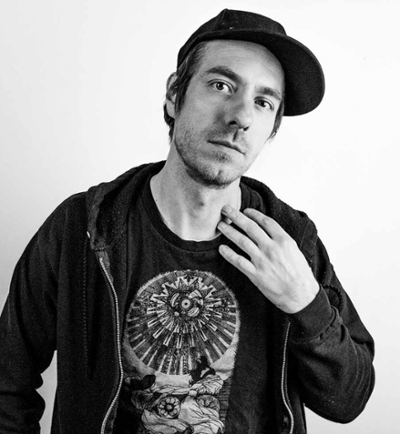
I first met Delwin Fiddler Jr. in 2010 when he facilitated a Q&A at documentary film screening I organized in North Philadelphia. I thought it would be a one-time connection, but Delwin called me in early 2011 and said, “Jon, when are we going to make our movie?” This was the impetus for our film Without Arrows (working title). Delwin is a champion powwow dancer and a Lakota man from the Cheyenne River Sioux Tribe community in South Dakota. The film chronicles his experience moving back home to the reservation to reconnect with his family and tribe after living in Philadelphia for 13 years.
I thought my previous film, QUEST, took a long time to complete clocking in at a decade, but Without Arrows has already surpassed it by two years. I believe in “slow cook” filmmaking and I think that my long process yields something unique that cannot otherwise be duplicated. I want to honor the complexity of my protagonists and reflect their points of view. It takes time understand how they see the world and earn their trust. Change over time is in inherently dramatic, but the intimacy that I can capture after spending years filming is what makes this work special.
I am proud to announce that I am working to complete this film with a core team that is majority women and 50% Native with my co-director Elizabeth Day (Ojibwe), and editors Leya Hale (Dakota/Diné) and Ellen Knechel. We are working hard and plan to submit to film festivals later this year. I am excited that ITVS (Independent Television Service) is our co-production partner and we will broadcast on PBS.
Elizabeth and I will be pitching the film at the HotDocs Forum later this month. The HotDocs Forum is a very selective international documentary market where we will get in front of distributors and broadcasters from all over the world with hopes of finding more champions to support the film and its exhibition.
https://itvs.org/films/without-arrows
https://hotdocs.ca/industry/conference/selected-projects
Rowan has supported Without Arrows many times over the years including SEED funding, STORI funding, and sabbatical leave.
Dr. Celine Hong (PR/ADV)
March 23, 2022. Dr. Celine Hong published a research project titled” ETHICAL PUBLIC TYPOLOGY: How Does Moral Foundation Theory and Anti-Corporatism Predict Public Differences in Crisis?” in Journal of Contingencies and Crisis Management (SSCI, IF=4.391) with a co-author, Dr. Shim (IE Business School, Spain). Ethics is about making the right decisions and providing justification as to why particular choices are made. The code of ethics for Public Relations Society of America (PRSA) posits that a member should be committed to ethical practices and should serve the public good by accepting and honoring the obligation to operate ethically. Aside from practitioners’ ethical challenges, not known is how a public’s ethical perceptions may influence decision making. How are publics not attuned to ethical issues identified? How would they interpret PR messages using thier ethical perspectives?
 My current research attempts to develop a new public typology which would help practitioners target appropriately among diverse publics. Based on the data from 1,124 U.S. participants (mean age = 35), the new Ethical Public Typology was developed and tested applicability of the ethical public segmentation framework with behavioral outcomes including attributing crisis, expressing negative emotion, and boycott intention.
My current research attempts to develop a new public typology which would help practitioners target appropriately among diverse publics. Based on the data from 1,124 U.S. participants (mean age = 35), the new Ethical Public Typology was developed and tested applicability of the ethical public segmentation framework with behavioral outcomes including attributing crisis, expressing negative emotion, and boycott intention.
The new public typology would an essential role in the formulation of public relations strategies, because of cross-border dissimilarities and similarities in public needs, preferences, and behavior. Acting on these dissimilarities and similarities calls for the grouping and subsequent targeting of key publics. By using moral Foundation Theory and anti-corporate sentiment, publics can be categorized into four segments in terms of their ethical minds: 1) moralists (high in both individual moral foundation and anti-corporatism), 2) antagonists (high in individual moral foundation and low in anti-corporate sentiment), 3) optimists (low in individual moral foundation and high in anti-corporate sentiment), 4) pragmatists (low in both dimensions). The results showed that in boycott intention and negative emotion were generated for moralists to be the highest, and pragmatists are lowest. This new typology contribute primarily to effective PR strategy with tailored messages. By employing segmentation, PR practitioners can reduce potential high costs in the pursuit of communicating with larger public groups who in the first place may not be concerned about a crisis.
Citation: https://onlinelibrary.wiley.com/doi/full/10.1111/1468-5973.12403
Dr. Miles Coleman and Dr. Joy Cypher (Comm Studies)
March 8. 2022. Did you know that there are people who believe that drinking a mysterious fruit juice will cure them of human immunodeficiency virus (HIV)? In this pseudoscientific belief, the way to rid oneself of the virus is not to take antiretrovirals—drugs that have been proven to effectively treat HIV—but rather to consume a beverage marketed on Facebook. Such beliefs have serious implications to public health. But intervention is not as simple as “correcting the facts.” Just beyond the surface of a misinformed FaceBook post about HIV is an entire network, spread across the internet, comprised of conspiracy theory websites and misinformed social media accounts. Circulating in these networks are entire worldviews, which shape how facts about HIV are interpreted in the first place. Correcting the facts is necessary. But, in order to that, we first need to understand the deep, often sophisticated, systems of belief from which pseudoscientific beliefs about HIV emerge. This is exactly what Coleman and Cypher set out to do in their article “The Digital Rhetorics of AIDS Denialist Networked Publics.” First Monday 25, no. 10 (2020): 1-15. https://journals.uic.edu/ojs/index.php/fm/article/view/10273/9743
In the article, Coleman and Cypher perform a “networked public analysis,” a method of rhetorical analysis that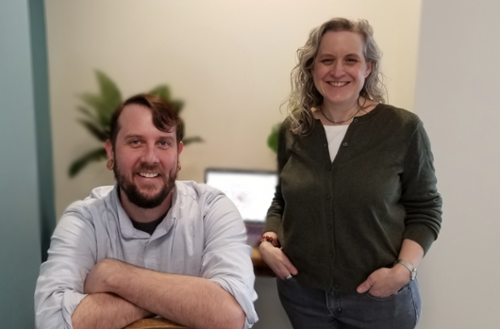 leverages computational tools (like web crawlers) to “map” networks on the world wide web a map of the HIV pseudoscience network, comprised of seventy-eight individual websites. From here, they read each individual website on the map whilst illustrating the relationships of those websites to others in the network to better understand the beliefs, values, and practices that characterize the network.From their analysis, Coleman and Cypher argue that engaging HIV pseudoscience is not merely a matter of correcting misunderstandings of science, for it also involves responsibly arguing to people who are likely in states of “existential suffering,” or states in which overwhelming loss of control and stability wreaks havoc on one’s lifeworld. For example, by offering arguments, spoken through the user experiences that allow persons to find information “on their own” and by emulating the form of nonprofit organizations fighting for the “underdog,” the digital rhetorics of HIV pseudoscience websites are able to offer control and stability along with misinformed claims about HIV science.
leverages computational tools (like web crawlers) to “map” networks on the world wide web a map of the HIV pseudoscience network, comprised of seventy-eight individual websites. From here, they read each individual website on the map whilst illustrating the relationships of those websites to others in the network to better understand the beliefs, values, and practices that characterize the network.From their analysis, Coleman and Cypher argue that engaging HIV pseudoscience is not merely a matter of correcting misunderstandings of science, for it also involves responsibly arguing to people who are likely in states of “existential suffering,” or states in which overwhelming loss of control and stability wreaks havoc on one’s lifeworld. For example, by offering arguments, spoken through the user experiences that allow persons to find information “on their own” and by emulating the form of nonprofit organizations fighting for the “underdog,” the digital rhetorics of HIV pseudoscience websites are able to offer control and stability along with misinformed claims about HIV science.
Edelman CCCA supported this research with travel funding to present a preliminary draft of the paper at the 2019 Association for Rhetoric of Science, Technology and Medicine preconference in Baltimore, MD.
Prof. Emily Baker (Art)
 Feb 23rd, 2022. This issue spotlights Professor Emily Baker’s (Art) work about Nylon 66. Nylon was first manufactured to replace silk, and then played a huge role in World War II. Now it is frequently utilized in construction and manufacturing alongside hoists and cranes. The versatility of this “strong as steel” polymer brings industries together that previously rarely overlapped. Her work focuses on the intersection of these two industries. This project is supported by the Hagley Museum and Library in Wilmington, Delaware, by funding an Exploratory Research Grant to spend a week with the extensive E.I. DuPont de Nemours & Company Advertising Department records. Once there, Baker will examine DuPont’s contribution to the textile industry, specifically their role in women’s fashion during the rebirth of nylon’s image post-WWII.
Feb 23rd, 2022. This issue spotlights Professor Emily Baker’s (Art) work about Nylon 66. Nylon was first manufactured to replace silk, and then played a huge role in World War II. Now it is frequently utilized in construction and manufacturing alongside hoists and cranes. The versatility of this “strong as steel” polymer brings industries together that previously rarely overlapped. Her work focuses on the intersection of these two industries. This project is supported by the Hagley Museum and Library in Wilmington, Delaware, by funding an Exploratory Research Grant to spend a week with the extensive E.I. DuPont de Nemours & Company Advertising Department records. Once there, Baker will examine DuPont’s contribution to the textile industry, specifically their role in women’s fashion during the rebirth of nylon’s image post-WWII.
For this project, Baker visited All-Lifts, Inc., a rigging shop in Upstate New York. At this location they make custom nylon webbing for very specific jobs. These custom straps must go through stringent testing procedures to ensure their load meets the maximum capacity for the job. In her own practice, she uses various forms of nylon to blur the boundary between women’s fashion and the rigging industry. Pictured here are cast brass charm-like versions of enlarged mechanisms used in garter belts placed beside hooks and other rigging parts. Moving in tandem, the connection of the two seems to be a strange pairing. When utilized in a sculpture, she plans to continue unpacking this practice of rendering an object non-functional as a way to honor it.
While at Hagley, Baker will be working with advertisements geared towards women who were encouraged and expected to return to their domestic affairs after the war. She is interested in how nylon extends the body while also being weaponized. She expects to continue this conversation at Hagley as her aim is to bridge the gaps between materials, industries, and our bodies. Through this research Baker can bring us closer to an understanding of the products we use and the journeys they have taken.
Prof. Heather Lanier (Writing Arts)
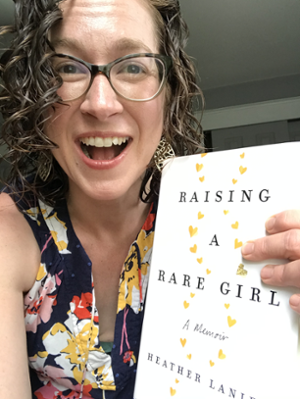 Feb 9th, 2022. This issue features Professor Heather Lanier, an assistant professor at Writing Arts. Professor Lanier works in the genre of creative nonfiction, which renders factual material in ways that are as engaging as fiction or poetry. By employing creative choices, such as narrative tension, characterization, and metaphoric association, her writing attempts to illuminate what is fascinating about what is true. Her most recent project, Raising a Rare Girl (Penguin Press, 2020), is a memoir about raising a child with a rare chromosomal condition. It tells the story of her daughter's first few years, as well as the aching joy and wonder of learning to be her mother. Through personal story and researched reflection, she uses the memoir-form to interrogate the culture’s ableism and defy the tyranny of ‘normal.”
Feb 9th, 2022. This issue features Professor Heather Lanier, an assistant professor at Writing Arts. Professor Lanier works in the genre of creative nonfiction, which renders factual material in ways that are as engaging as fiction or poetry. By employing creative choices, such as narrative tension, characterization, and metaphoric association, her writing attempts to illuminate what is fascinating about what is true. Her most recent project, Raising a Rare Girl (Penguin Press, 2020), is a memoir about raising a child with a rare chromosomal condition. It tells the story of her daughter's first few years, as well as the aching joy and wonder of learning to be her mother. Through personal story and researched reflection, she uses the memoir-form to interrogate the culture’s ableism and defy the tyranny of ‘normal.”
According to the 2010 U.S. Census Bureau, nearly one-fifth of Americans live with a disability. And yet, healthcare professionals and educators often view disability as a problem to solve, rather than an aspect of human diversity. Her book challenges stereotypes of intellectual disability, empowers fellow parents, and constructs a new narrative about what it means to be human. As a memoir of motherhood and love, Raising a Rare Girl also illuminates the ways that parenting can break us open in the best of ways.
The book has been hailed by Kirkus Reviews, Publisher’s Weekly, Slate, and The New York Times Book Review, where it was named an “Editors’ Choice.”
"I am grateful to the Rowan community for their support in helping me finish the book and find creative ways to share it in the pandemic" –H.L.
Dr. Alison Novak (PR/ADV)
Jan 26th, 2022. This issue spotlights Dr. Alison Novak’s (PR/ADV) publication of "#StandwithCaster: Yelp, Twitter, intersectionality, and the IAAF’s DSD policy." in Long Anderson, M. (Ed.) Social Justice and the Modern Athlete: Exploring the Role of Athlete Activism in Social Change.
Ever look at a Yelp review and think, “that person clearly wants to destroy this company’s reputation?” Sites like Yelp and Google Reviews generate millions of views and impact how the larger public perceives the reputation, credibility, and quality of organizations around the world. Occasionally, online groups co-opt these spaces to leave political messaging rather than post honest reviews of an organization. For organizations that make controversial decisions, the risk of online groups co-opting Yelp and Google Reviews is high.
This is what happened when World Athletics (formerly known as the International Amateur Athletic Federation) created a policy that banned women with high levels of naturally-produced testosterone from competing in track competitions like the Olympics. These policies appeared to target one athlete in particular, Caster Semenya, who won a 2016 gold medal for South Africa and held the world record in 800 meters for the past decade. To fans, the new policies from World Athletics appeared sexist, unfair, and even unscientifically founded. Thus, to protest the new rules that would eliminate her from the 2020/2021 Tokyo Olympics, they posted angry messages to Yelp and reduced the organizations previous 4.9 star review to .2.
This project looked at how Yelp served as a space for the discursive construction of a protest community, particularly one that aimed to harm the reputation of an organization and advocate for policy change. To study this phenomenon, I collected data using NVivo Pro 12, a qualitative software tool that archives online content and allows for qualitative/critical analysis of discourses- thanks to the software support of Dr. Robert Weaver in Health and Exercise Science. The project was presented at ICA in 2020 and won a top paper award in the Sports Communication Interest Group. In early 2022 it was published in Dr. Mia Long Anderson’s edited volume “Social Justice and the Modern Athlete: Exploring the Role of Athlete Activism in Social Change” (available next month).
Managing sites like Yelp is a challenging yet important aspect of public relations. Despite this, there are few studies that examine the impact of poor management or propose best practices for practitioners to follow. My current and future projects aim to answer both of these calls in a variety of industries and contexts.
Citation: Novak, A. N. (2022). "#StandwithCaster: Yelp, Twitter, intersectionality, and the IAAF’s DSD policy." in Long Anderson, M. (Ed.) Social Justice and the Modern Athlete: Exploring the Role of Athlete Activism in Social Change. Routledge: New York.
Dr. Angela Cirucci (Comm Studies)
December 8, 2021. This issue features Dr. Angela Cirucci (Comm Studies)’s work about Zoom Affordances and Identity: A Rowan Case Study.
In the pandemic-induced move to virtual learning environments (VLEs), I noticed that, while professors and students alike were trained in how to use the technical tools, little thought was given to the ways in which digital affordances had an impact on students' identities. Indeed, how to engage students online became a popular topic of study. Largely left out, however, are the ways in which the VLEs themselves have implications for student identity maintenance and, consequently, learning quality. All digital spaces are human-made, and thus include "baked-in" prejudices that privilege some identifications while pushing others to the background.
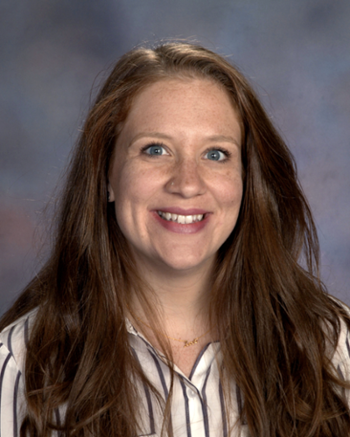 This case study of Rowan University undergraduates pairs a walkthrough analysis of a popular VLE—Zoom—with responses (n=250) to an open-ended survey to investigate how VLE affordances impact student identifications and, subsequently, quality of learning. Overall, Rowan students found Zoom to be more user-friendly because it is designed to look like popular social media apps, yet they were not comfortable being visible. Many students were concerned about their classmates and professors seeing their physical backgrounds, particularly those who reported having family incomes below $50,000. Subsequently, they rarely turned on their cameras. BIPOC who identify as women feared being judged based on their physical appearance and chose to rarely turn on their cameras As one of the first studies to explore VLE affordances and their impact on identities, findings suggest that already marginalized groups feel the pains that came with the shift to online learning more acutely. Because digital spaces are performative, as well as subjective reflections, it is important to understand how the design choices, tools, and functionalities have implications for identities. I recommend that professors and universities provide training for identity personalization and to find ways to invite students to participate that do not include mandatory cameras.
This case study of Rowan University undergraduates pairs a walkthrough analysis of a popular VLE—Zoom—with responses (n=250) to an open-ended survey to investigate how VLE affordances impact student identifications and, subsequently, quality of learning. Overall, Rowan students found Zoom to be more user-friendly because it is designed to look like popular social media apps, yet they were not comfortable being visible. Many students were concerned about their classmates and professors seeing their physical backgrounds, particularly those who reported having family incomes below $50,000. Subsequently, they rarely turned on their cameras. BIPOC who identify as women feared being judged based on their physical appearance and chose to rarely turn on their cameras As one of the first studies to explore VLE affordances and their impact on identities, findings suggest that already marginalized groups feel the pains that came with the shift to online learning more acutely. Because digital spaces are performative, as well as subjective reflections, it is important to understand how the design choices, tools, and functionalities have implications for identities. I recommend that professors and universities provide training for identity personalization and to find ways to invite students to participate that do not include mandatory cameras.
* This project is under review for Eastern Communication Association conference.
Dr. Drew Kopp (Writing Arts)
November 24, 2021. The current issue features the work of Dr. Drew Kopp, Professor of Writing Arts ; his co-authored book Speaking Being: Werner Erhard, Martin Heidegger, and a New Possibility of Being Human, and his article “Schopenhauer’s Telescope: Tracing the Mind of a Clever Animal” (Issue 3 of Intraspection)
In "Schopenhauer's Telescope: Tracing the Mind of a Clever Animal," I attempt a close reading of Arthur Schopenhauer's rhetorical maneuvers as they appear in Friedrich Nietzsche's unpublished essay "On Truth and Lies in a Nonmoral sense," which itself serves as both a stylistic homage to the elder philosopher and an effort to escape from the debt Nietzsche owed to his educator. Reading both 19th century philosophers together makes it possible to see the rhetorical role philosophical discourse plays in bringing its addressee into “illumination,” while also permitting subtle rhetorical cues to emerge that spell the impossibility of any such illumination--despite cogently argued declarations to the contrary.
Written with Bruce Hyde, Speaking Being: Werner Erhard, Martin Heidegger, and a New Possibility of Being Human (August 2019) provides an unprecedented study of the ideas and methodology originally developed by the thinker Werner Erhard, and presented in a course called The Forum, a course that has since evolved further and is offered today by Landmark Worldwide. The book is a comparative analysis that demonstrates how Erhard’s rhetorical project and the philosophical project of Martin Heidegger each illuminate the other. The central claim is that the dialogue of The Forum—presented here in the form of a transcript of an actual course that took place in San Francisco in December of 1989—functions to generate a language which speaks Being, that is, The Forum is an instance of what is called ontological rhetoric: a technology of communicating the unspoken realm of language that allows its listeners to create a new possibility of being human in the world. The purpose of this book is to show that this is actually accomplished in The Forum, and to demonstrate—with Heidegger’s thinking presented in a series of “Sidebars” and “Intervals” alongside The Forum transcript —how Erhard did it in 1989.
Dr. Colleen Montgomery (Radio, Television, and Film)
November 10, 2021. The current issue features Colleen Montgomery (RTF)’s work ,“From Moana to Vaiana: Voicing the French and Tahitian Dubbed Versions of Disney’s Moana” published in American Music (issue 39;2).
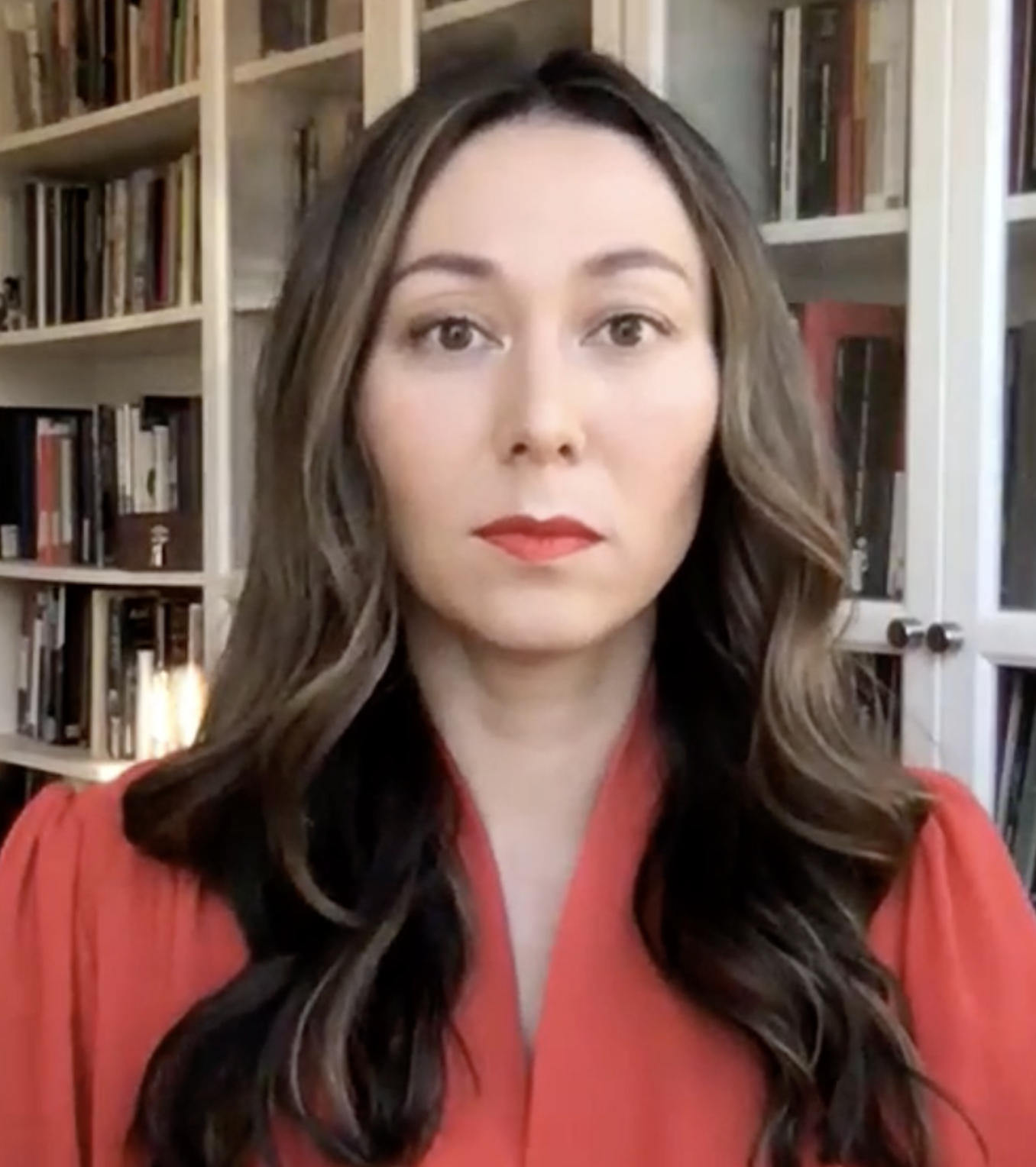 Disney Character Voices International, the dubbing division of Walt Disney Studios, produces upwards of forty dubbed versions of each new animated feature film. This piece examines the cultural, industrial, and institutional pressures that shape the form and function of these dubs within and across disparate national contexts. Taking the French, Québecois, and Tahitian versions of Moana as case studies, the article considers how Disney’s dubs negotiate issues of cultural authenticity and ethnolinguistic identity
Disney Character Voices International, the dubbing division of Walt Disney Studios, produces upwards of forty dubbed versions of each new animated feature film. This piece examines the cultural, industrial, and institutional pressures that shape the form and function of these dubs within and across disparate national contexts. Taking the French, Québecois, and Tahitian versions of Moana as case studies, the article considers how Disney’s dubs negotiate issues of cultural authenticity and ethnolinguistic identity
Whereas the English language version of Moana features a pan-Polynesian voice cast, the continental French version received significant criticism for failing to include Pacific voices in the translation process and voice cast. The Québecois version, though specifically created for the French-Canadian market employs a “neutral” dialect that erases the linguistic features of the Québec vernacular in favor of an “unmarked” French. The Tahitian version, dubbed in the Indigenous language Reo Tahiti, was not created for commercial exploitation but rather to serve as a pedagogical tool for Indigenous language instruction. Unlike the aforementioned dubs, the production of the Tahitian version was primarily supported by public funding from local government and non-profit organizations, and dubbers received no remuneration for their labor.
Combining textual and industrial analysis, the piece provides new insight into the cultural politics of translation, voice casting, vocal performance. The article’s examination of the relationships between voice, identity, and authenticity in dubbed versions of Moana is especially timely in light of recent controversies surrounding race, representation, and vocal whitewashing of characters of color in animated films and television shows.
The article is part of a special issue of American Music on sound and music in Disney animation that brings together scholars from diverse fields including film history, musicology, childhood studies, sound studies, and animation studies. I presented portions of this research at the Society for Cinema and Media Studies, Society for Animation Studies, and Music and the Moving Image conferences with support from the Department of Radio, Television, and Film and the Edelman College of Communication and Creative Arts.
Dr. Rui Shi (Communication Studies)
Oct 26, 2021. The current issue spotlights Dr. Shi’s (Communication Studies) recent research project, “The dilemma of correcting nicotine misperceptions: Nicotine replacement therapy versus electronic cigarettes” published in Health Communication.
A large proportion of smokers have misperceptions of the health risks associated with nicotine use. 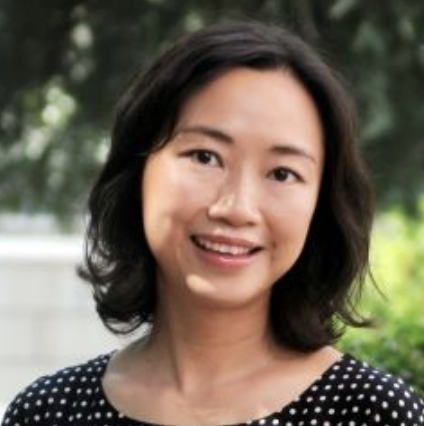 Some believe nicotine is harmless while others see it as the main carcinogen in cigarettes and the leading cause of diseases (e.g. lung cancer and heart attack). On the one hand, the belief in nicotine safety may lead electronic cigarette users to ignore the risk associated with their use of e-cigarettes. On the other hand, for smokers who are trying to quit, belief in the exaggerated harm of nicotine could deter them from using nicotine replacement therapy as a quitting aid. This paper reported results from two empirical studies that evaluated the necessity of correcting nicotine misperceptions and explored possible intervention strategies to increase use of nicotine replacement therapy and decrease use of e-cigarettes. In this paper I demonstrated it was relatively easy to correct misinformation on the knowledge level but difficult to change the corresponding attitudes and behavior. For example, the health message that informed people of the actual nicotine harm (i.e. nicotine does NOT cause cancer) could successfully lower people’s perception of nicotine harm, but their attitude and intention towards their use of nicotine replacement therapy and electronic cigarettes remained unchanged. To affect attitude and intention, the health message must go beyond misinformation correction and address product use specifically. For example, when people viewed a message that addressed misinformation surrounding both nicotine harm and e-cigarettes, their favorable attitude and intention to try e-cigarettes decreased.
Some believe nicotine is harmless while others see it as the main carcinogen in cigarettes and the leading cause of diseases (e.g. lung cancer and heart attack). On the one hand, the belief in nicotine safety may lead electronic cigarette users to ignore the risk associated with their use of e-cigarettes. On the other hand, for smokers who are trying to quit, belief in the exaggerated harm of nicotine could deter them from using nicotine replacement therapy as a quitting aid. This paper reported results from two empirical studies that evaluated the necessity of correcting nicotine misperceptions and explored possible intervention strategies to increase use of nicotine replacement therapy and decrease use of e-cigarettes. In this paper I demonstrated it was relatively easy to correct misinformation on the knowledge level but difficult to change the corresponding attitudes and behavior. For example, the health message that informed people of the actual nicotine harm (i.e. nicotine does NOT cause cancer) could successfully lower people’s perception of nicotine harm, but their attitude and intention towards their use of nicotine replacement therapy and electronic cigarettes remained unchanged. To affect attitude and intention, the health message must go beyond misinformation correction and address product use specifically. For example, when people viewed a message that addressed misinformation surrounding both nicotine harm and e-cigarettes, their favorable attitude and intention to try e-cigarettes decreased.
While e-cigarette has been accepted as a legitimate quitting tool in Europe, its value in smoking cessation and harm reduction has been under heated debate in the U.S.. The strategies adopted in the message development in this study shed some light on the issue of how to communicate uncertainty on health topics where even the experts don’t have a consistent recommendation. Instead of telling the public we still don’t know, and more research is needed, communication material could consider presenting scientifically accurate information that represent both the pros and the cons of the health behavior in question, so that the audience can make an informed decision. This two-sided message does not have to be a balanced message. One side (in this case the con side) could outweigh the other (the pro) when there is a slightly preferred position.
Citation: Shi, R., Feldman, R., Liu, J., & Clark, P. I. (2020). The dilemma of correcting nicotine misperceptions: Nicotine replacement therapy versus electronic cigarettes. Health Communication,https://doi.org/10.1080/10410236.2020.1800288
Dr. Bokyung Kim (PR/ADV)
October 11th, 2021. This week's Research Spotlight introduces Dr. Bokyung Kim (Department of PR/ADV) ’s research, “The Integrated Model of Wearable Activity Tracker Use: Exploring Health Beliefs and Obesity Information Seeking Behaviors from a Nationally Representative Sample” published in Journal of Medical Internet Research – Formative Research. The goal of this project was to build and test a theory-driven mathematical model of how different interactions between individual health beliefs (perceived severity, perceived susceptibility, perceived benefits, and self-efficacy) and multi factors (information-seeking behaviors) influencewearable fitness tracker use among both obese and healthy adults.
“The Integrated Model of Wearable Activity Tracker Use: Exploring Health Beliefs and Obesity Information Seeking Behaviors from a Nationally Representative Sample” published in Journal of Medical Internet Research – Formative Research. The goal of this project was to build and test a theory-driven mathematical model of how different interactions between individual health beliefs (perceived severity, perceived susceptibility, perceived benefits, and self-efficacy) and multi factors (information-seeking behaviors) influencewearable fitness tracker use among both obese and healthy adults.
Dr. Kim was inspired to conduct research that offers a multi-perspective model and provide empirical evidence of what leads to frequent usage of wearable health technologies from a large, nationally representative survey sample. In doing so, the paper proposed the Integrated Model of Wearable Activity Tracker Use (IMWAT). This model tested with data collected from a telephone survey with a national quota sample of 2,006 participants. More than half of the participants were female (n=1,183, 59%); they were married (n=1374, 69%), and over half had a college degree (n=1,100, 55%) and were White or Caucasian (n=1126, 56%), followed by African Americans, Hispanics/Latinos, others, and Asians. Using structural equation modeling analysis, the results showed the perceived benefits of physical activity, perceived susceptibility, and self-efficacy toward obesity were significant predictors of information-seeking behaviors, which, in turn, mediated their effects on the use of wearable activity trackers. Perceptions of obesity severity directly promoted wearable device usage. This suggests health informatics and health care practitioners of public obesity intervention programs should focus on effective communication strategies: 1) they should make users feel that use of wearable activity trackers is not a barrier to overcome but a beneficial way of managing oneself; and 2) they could also benefit from promoting the significance and severity of obesity to their target health consumers.
This project was fully funded by Rowan University’s Camden Health Research Initiative Grant. The funding was crucial for completion of this project and made our publication possible in the prestigious science/medical journal.
Dr. Emil Steiner (Journalism) 
September 22nd, 2021. “Decade of Esports Scholarship: An organizing review of the academic literature on competitive video game play, 2010-2020” was presented at the 2021 International Communication Association Conference. The goal of this project was to provide organizational and heuristic value for those studying eSports within media and communication while elucidating the connections that exist between them and eSports researchers from other fields.
Although video games have been played and studied for over 50 years, eSports—professional, broadcast video game competition—is a relatively new phenomenon that scholars only began studying last decade. The daunting and disparate variety of fields, theories, and methodologies became clear to me while I was attempting to create a literature review for an article about eSports streaming during the Great Lockdown of 2020. With such a diversity of scholars describing related phenomena, it was difficult to assess where to start. At the same time, I also recognized that there must be other scholars attempting to research eSports facing similar barriers to entry: How do you find the appropriate foundational works on which to build your research across a novel, pan-disciplinary subject like eSports? What are the connections between already published 300-plus articles and how do you accurately identify the subfields necessary for efficient research? When it comes to eSports, the proverbial “gap in the literature” was that there was no roadmap for that literature. So, I decided to create one.
I contacted Campbell Information Literacy Librarian Samantha Kennedy, who recognized almost immediately that we had the opportunity to build a valuable database for this emerging field that would provide clarity for future researchers in what is a rapidly growing subject of scholarship. To assist us with the canonical organization, analysis, and data visualization we recruited two Sports CaM research interns – Jake Fernandez (’21) and Jacob Petrosh (’22). Our preliminary findings reveal 10 years of theoretical and methodological development similar to other new media phenomena, metaphysical discourse on the nature of identity, sport, and embodiment through questions of property and injury emerging from broadcast, professionalized video game competition. We are currently finalizing our first article for submission to peer-reviewed journals, as well as creating an accessible eSports Research Database for Campbell Library.
Dr. So Young Lee (Public Relations/ Advertising)

September 8th, 2021. “Distance matters: the effects of self-brand connections and construal levels on ad responses” was published in the International Journal of Advertising and synthesized the two theoretical frameworks with Construal Level Theory and Self-Brand Connections.
Strong Self-Brand Connections have been found to positively influence brand evaluations, however, in the marketplace, not all brands enjoy strong Self-Brand Connections. While some brands with strong connections thrive on positive responses from their target consumers, others struggle to break away from weak connections. Thus, I posed the question: “How do consumers respond to marketing efforts for brands with weak (vs. strong) connections?” Considering consumers share a similar level of brand perception with others, examining how a group of consumers responds to advertising for brands with weak (or strong) connections can provide a better understanding of how consumers respond to ads. Thus, I wanted to offer valuable insights into the effects of Self-Brand Connections on consumers’ responses to advertising.
Understanding the underlying mechanisms of building connections between a brand and consumers is of great significance for both researchers and practitioners tasked with developing marketing communication strategies. The current research provides unique insights to help researchers and practitioners grasp how consumers as a group understand and respond to ad messages framed with different construal levels. The results demonstrate of 1) the importance of diagnosing the focal brand’s level of Self-Brand Connections among target consumers to develop ad strategies, and 2) that aligning target consumers’ levels of Self-Brand Connections with construal levels in ad elements (e.g., ad copy and visuals) would increase the effectiveness of advertising, especially for a brand with weak Self-Brand Connections.
